The document discusses file handling in C++. It covers the basics of file management including the different types of files, file streams, and the file manipulation process. The key steps in the file manipulation process are: 1) declaring a file stream object; 2) opening a file using the file stream object; 3) checking if the file opened successfully; and 4) performing read and write operations on the file. The document provides examples of writing to and reading from files in C++.
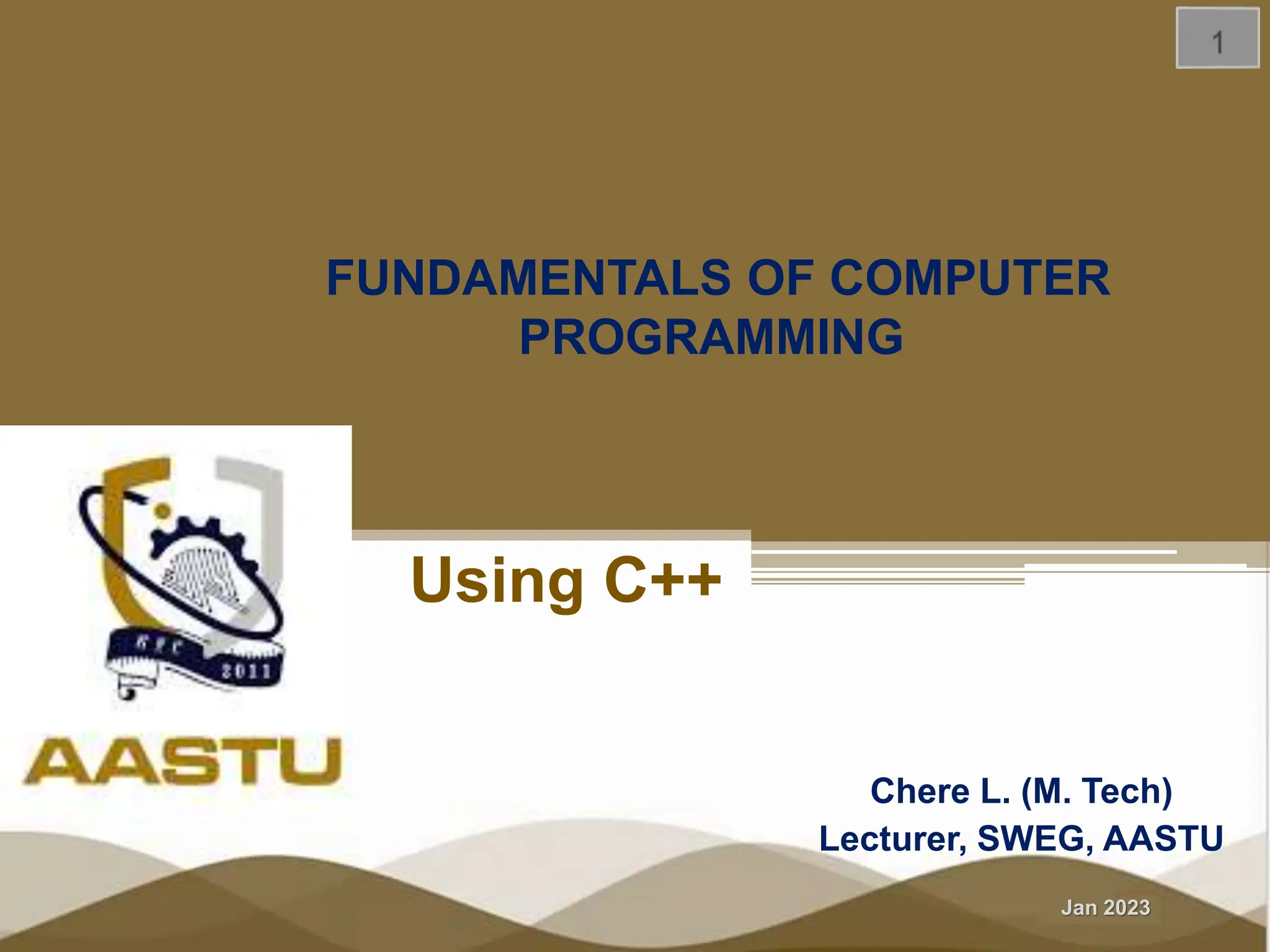
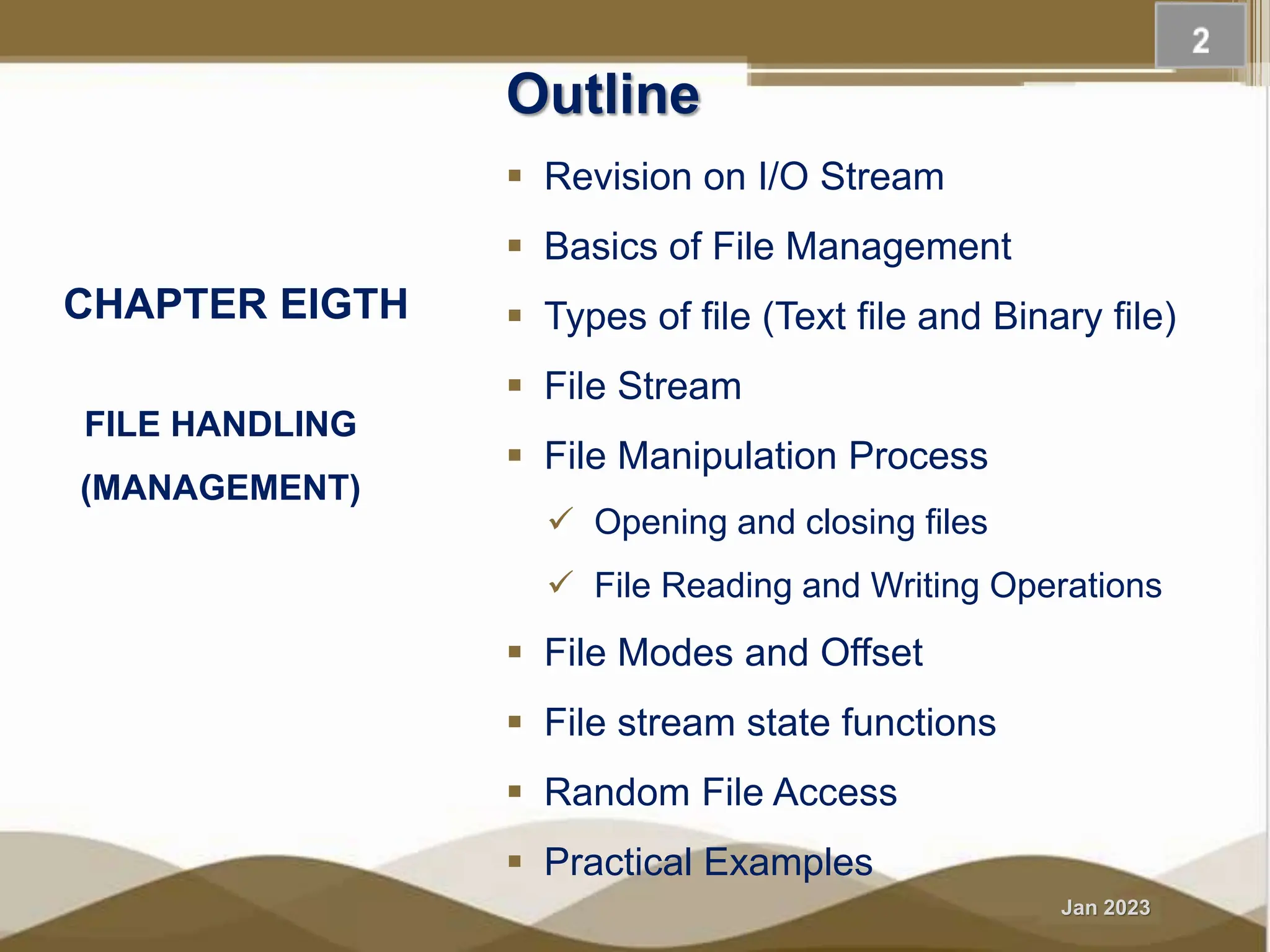


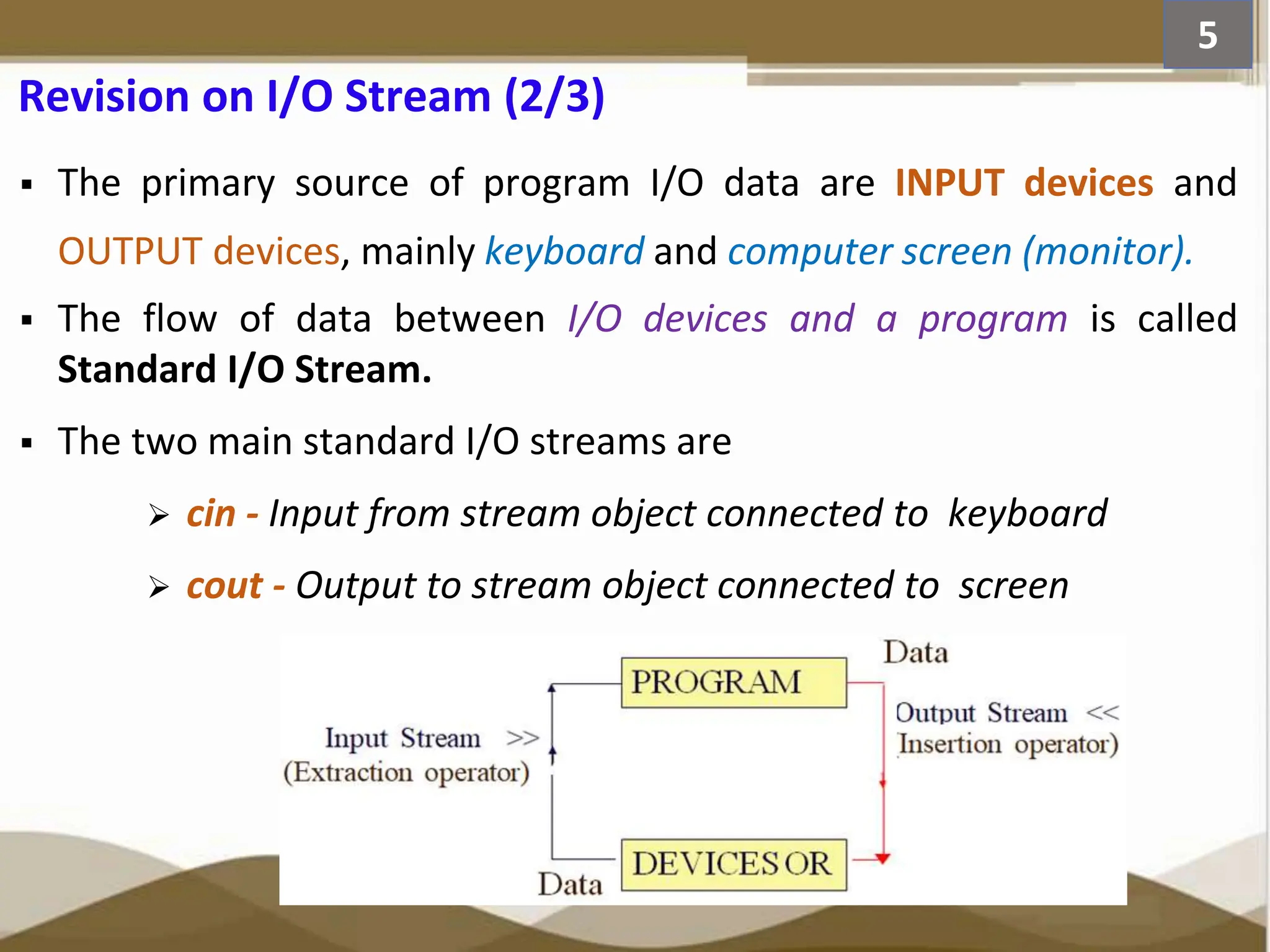
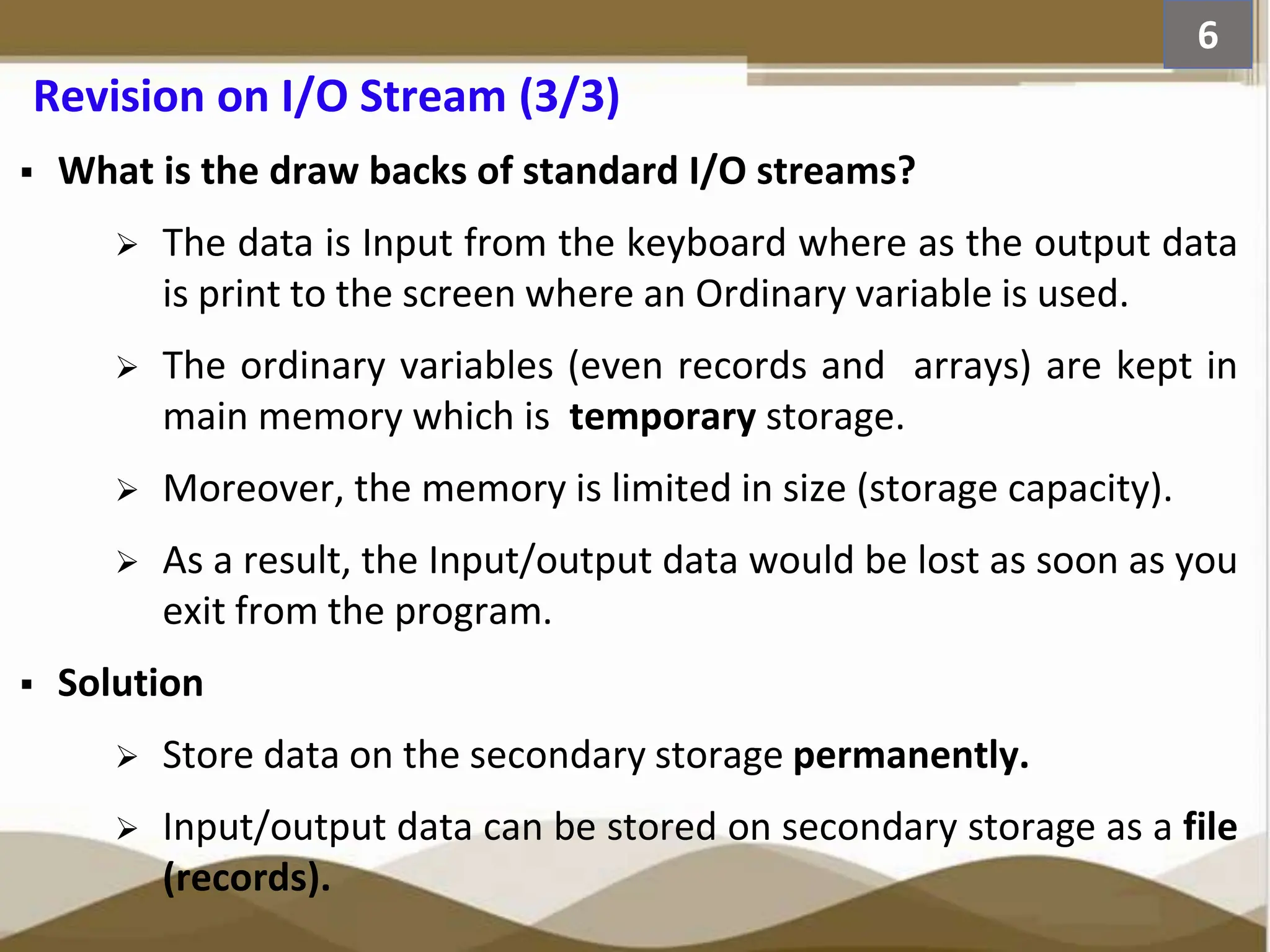
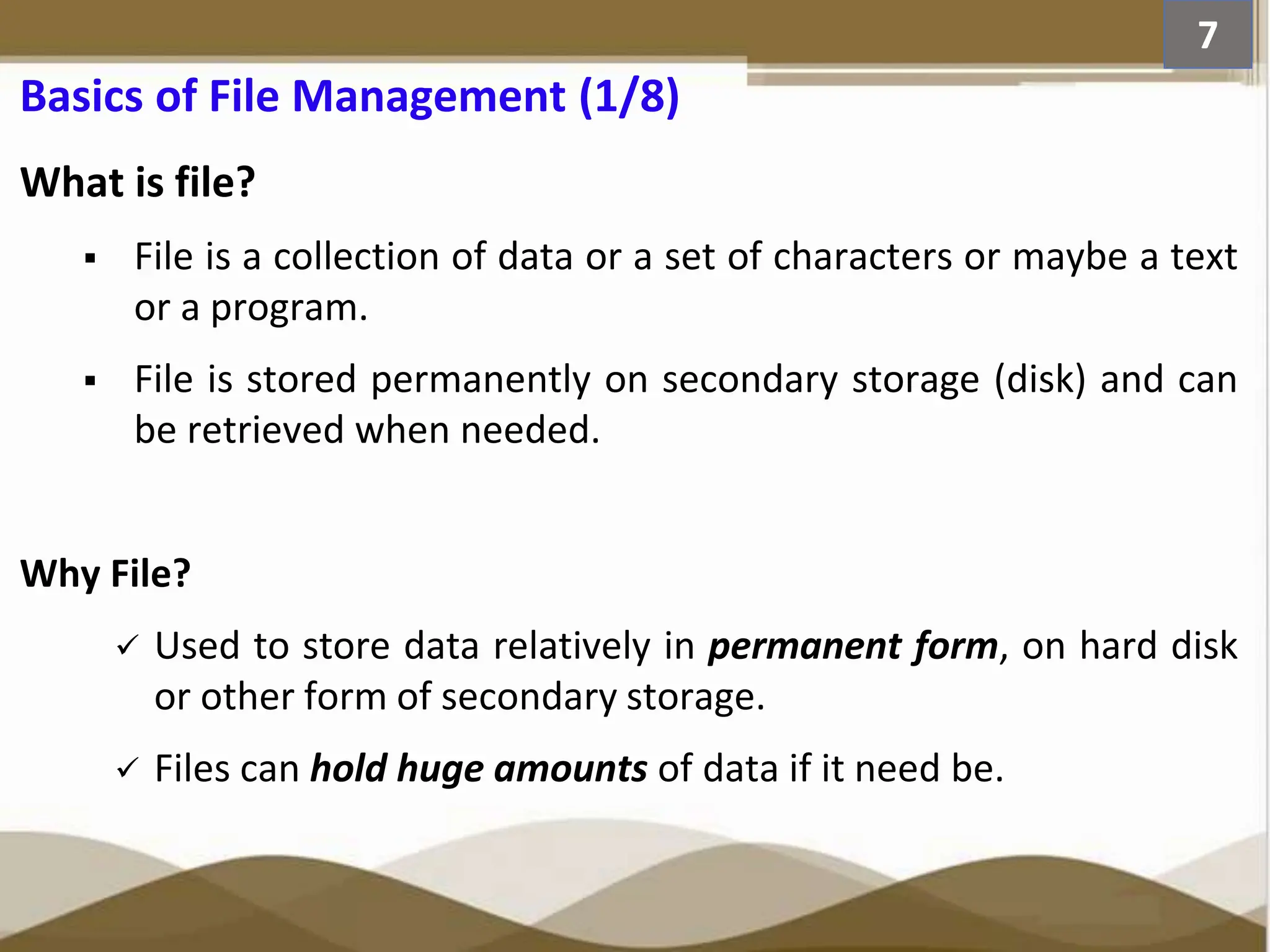

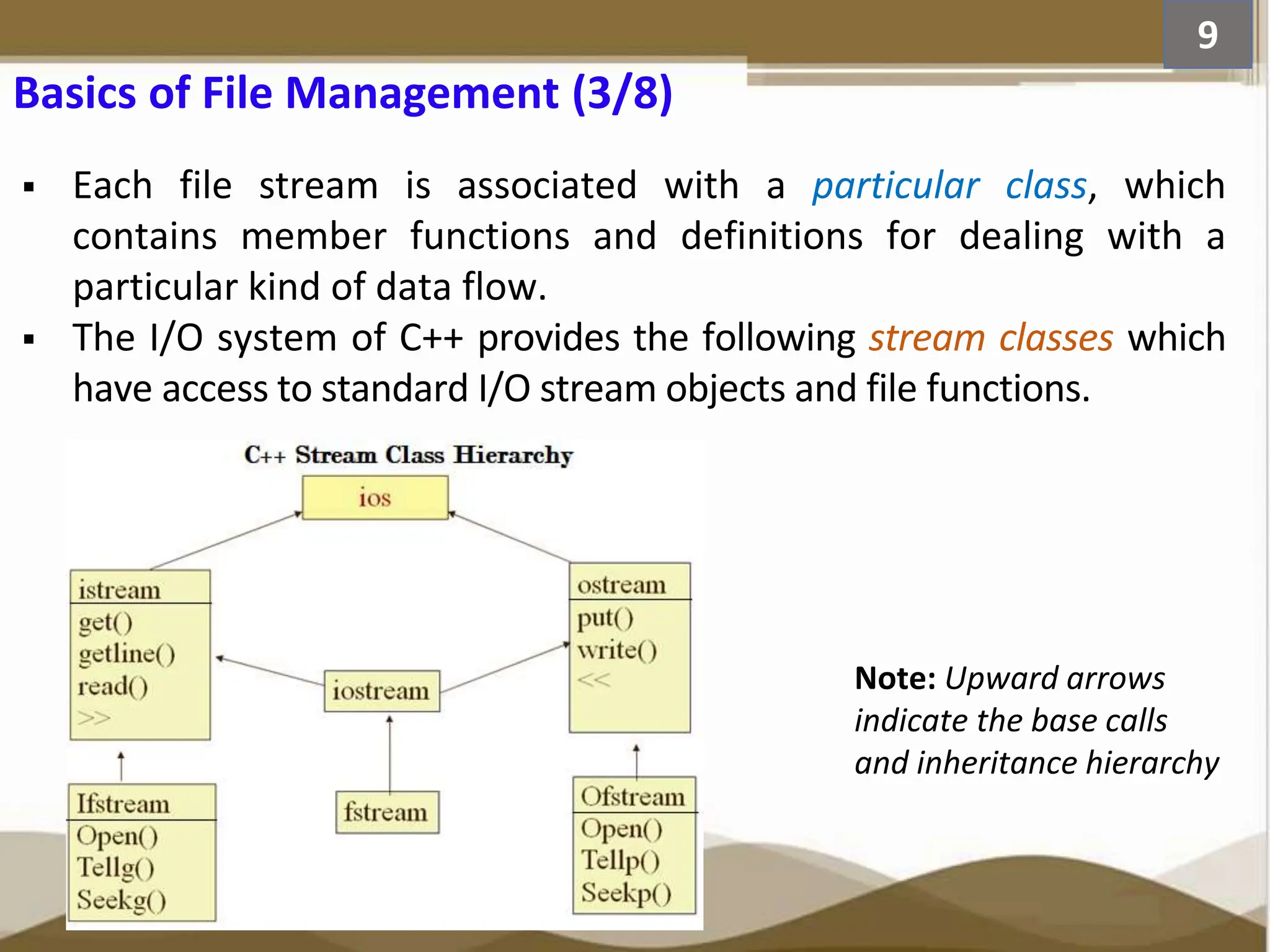
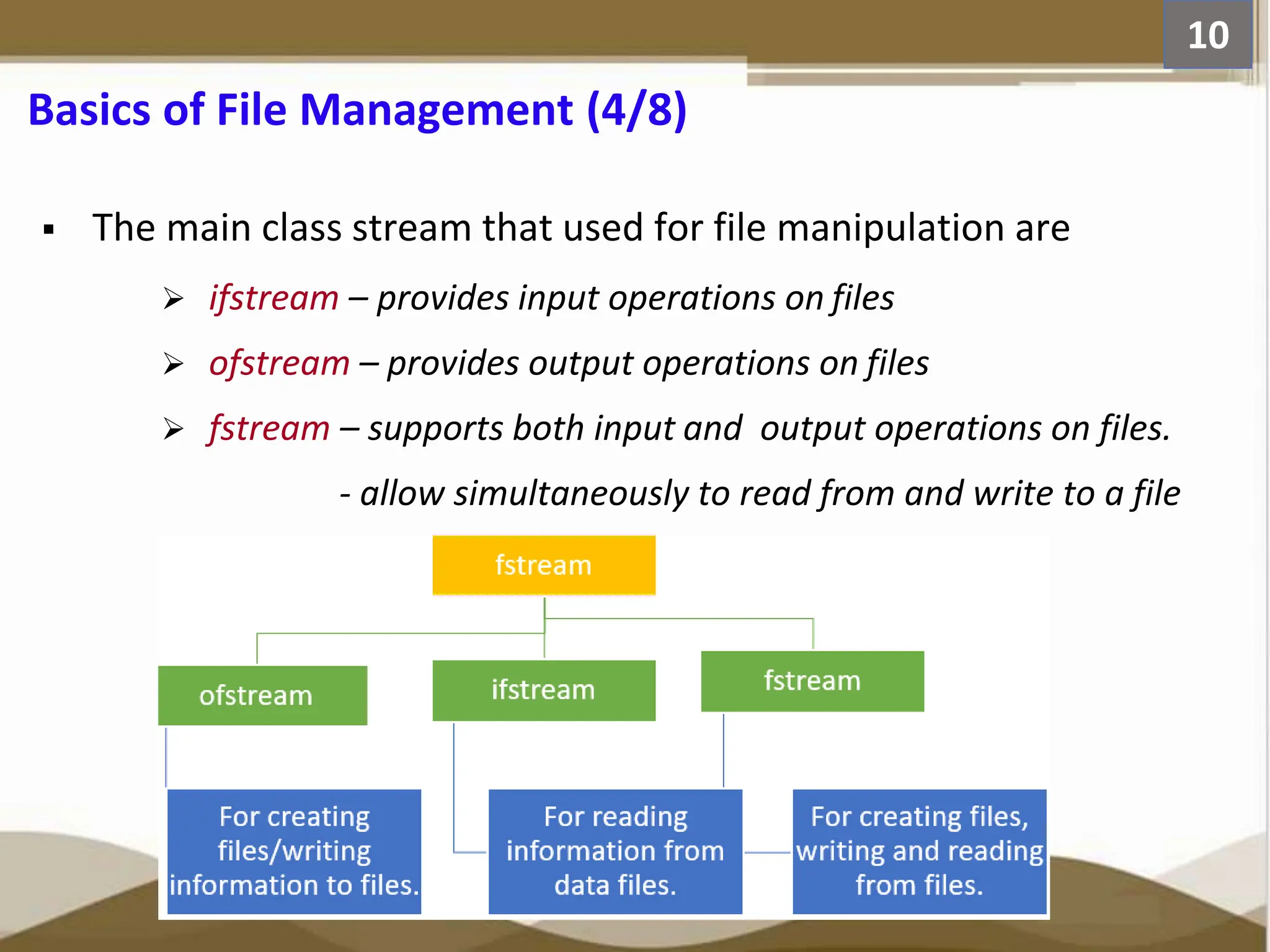
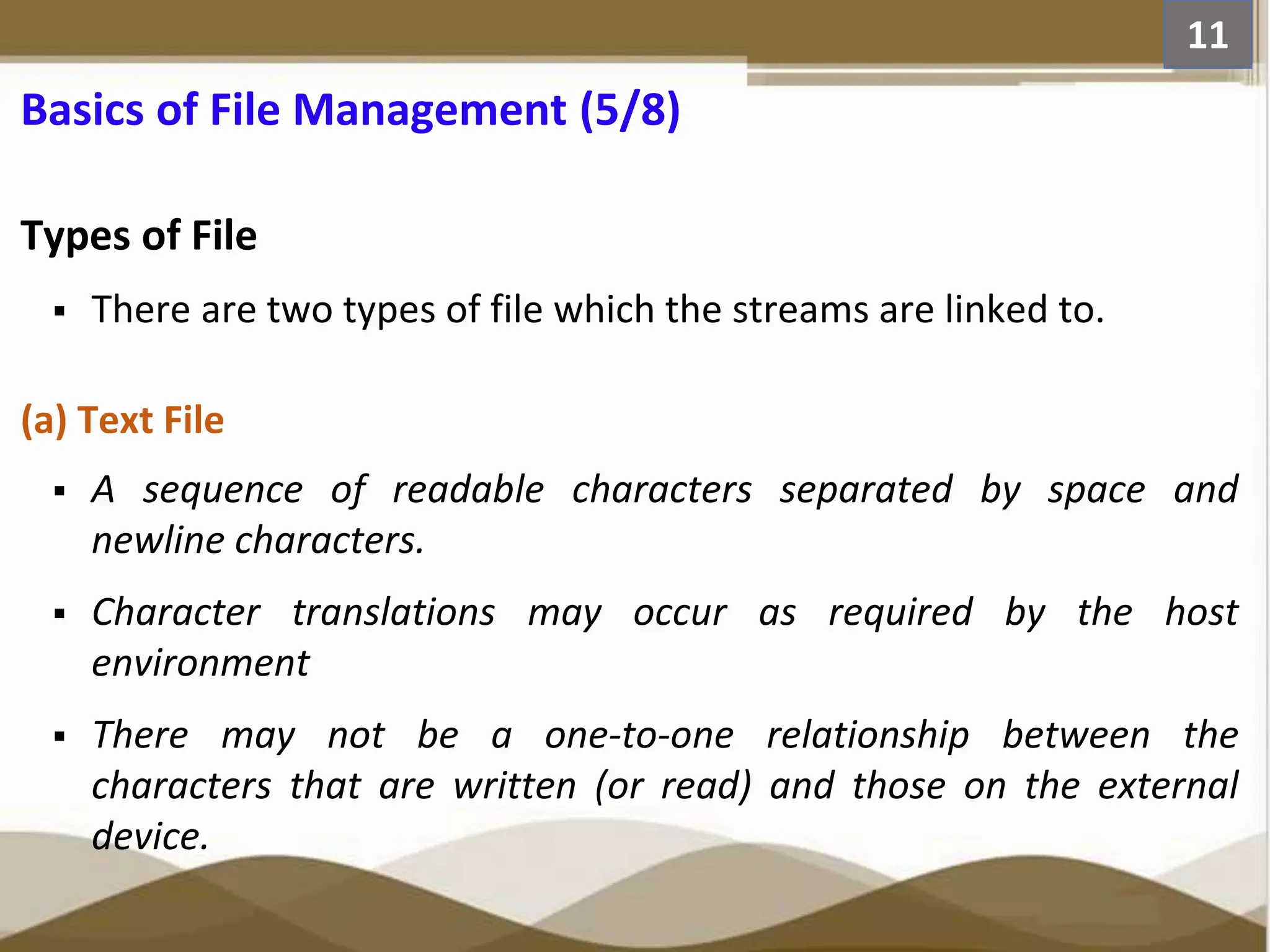
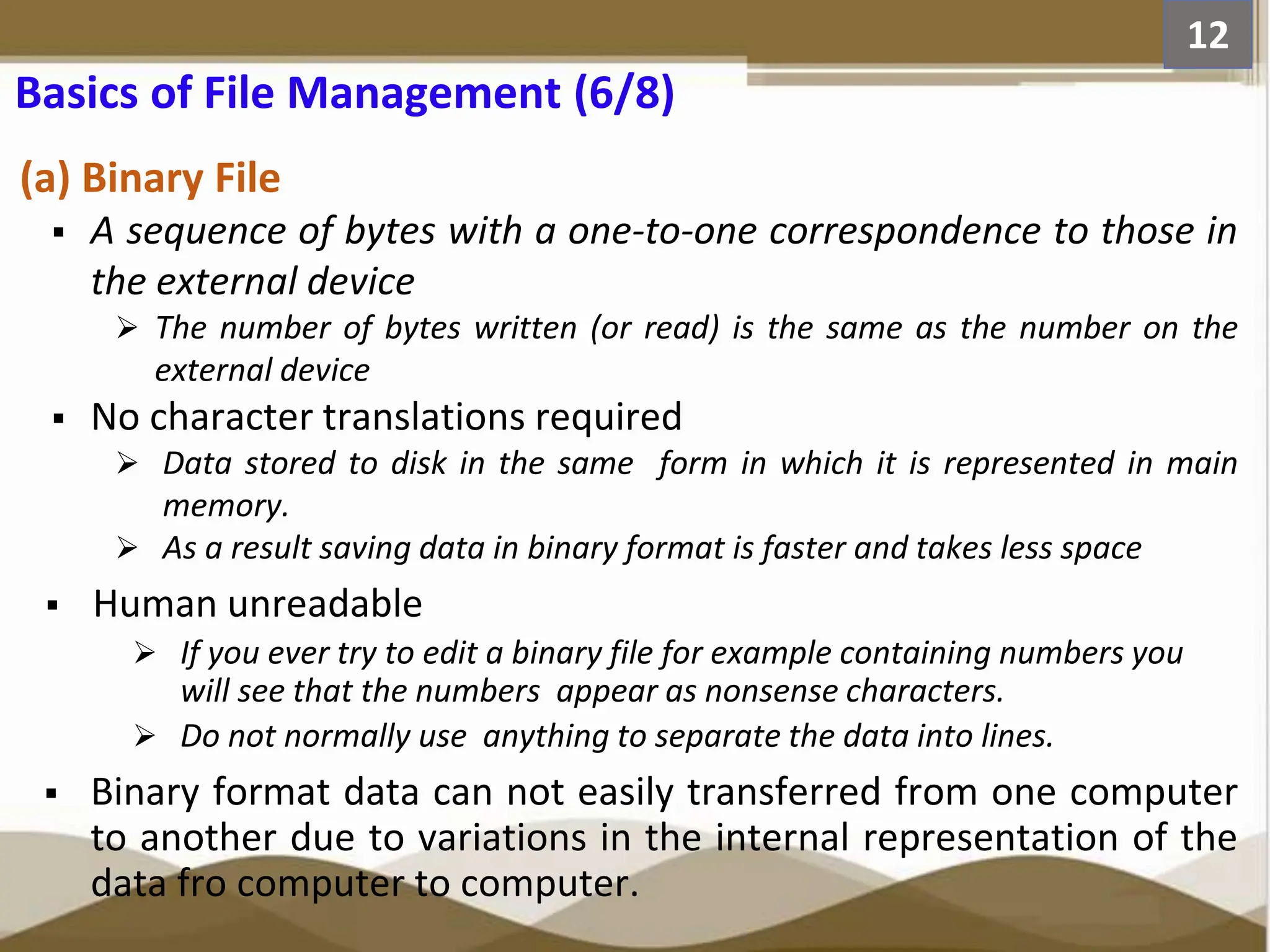
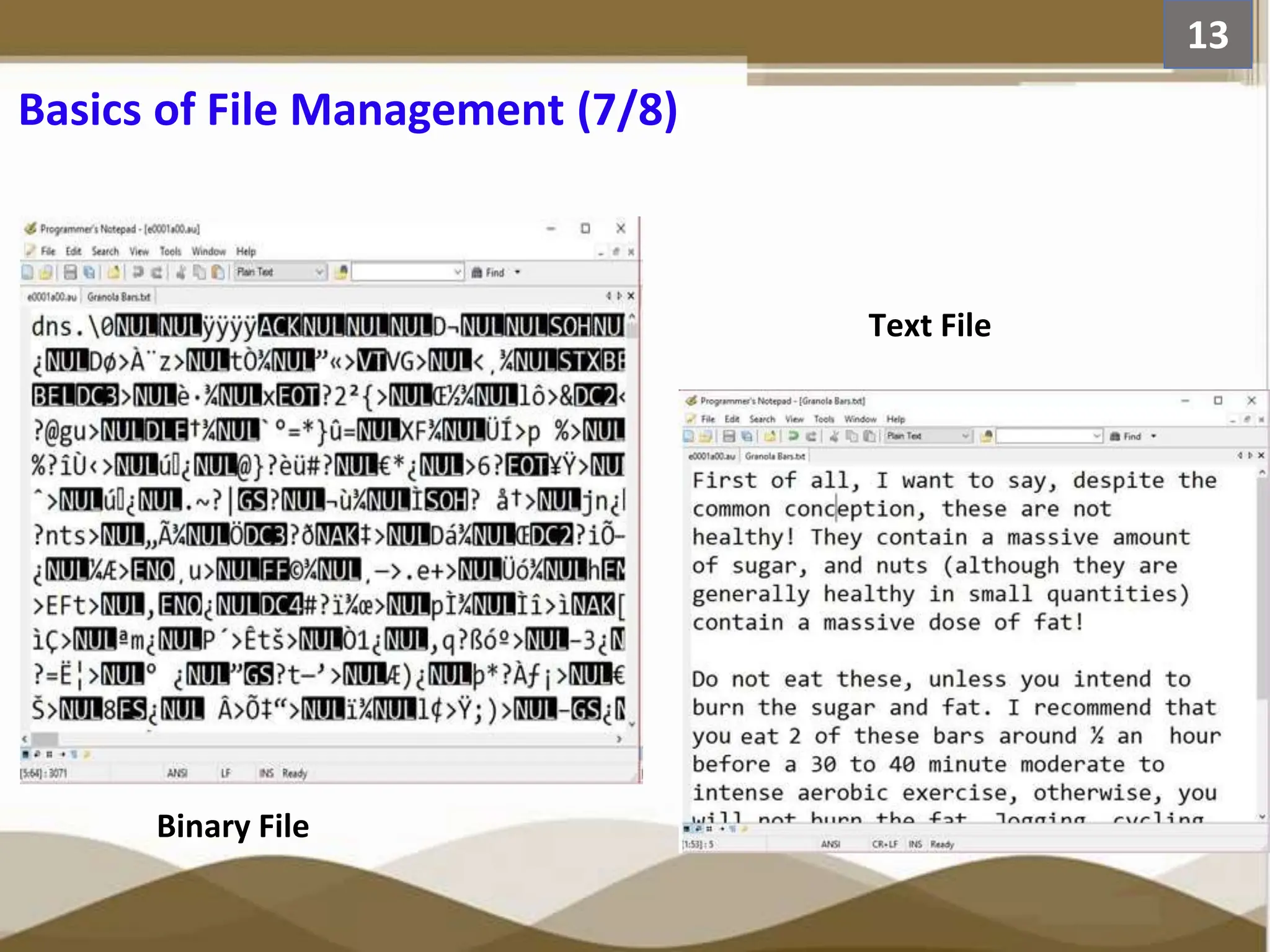
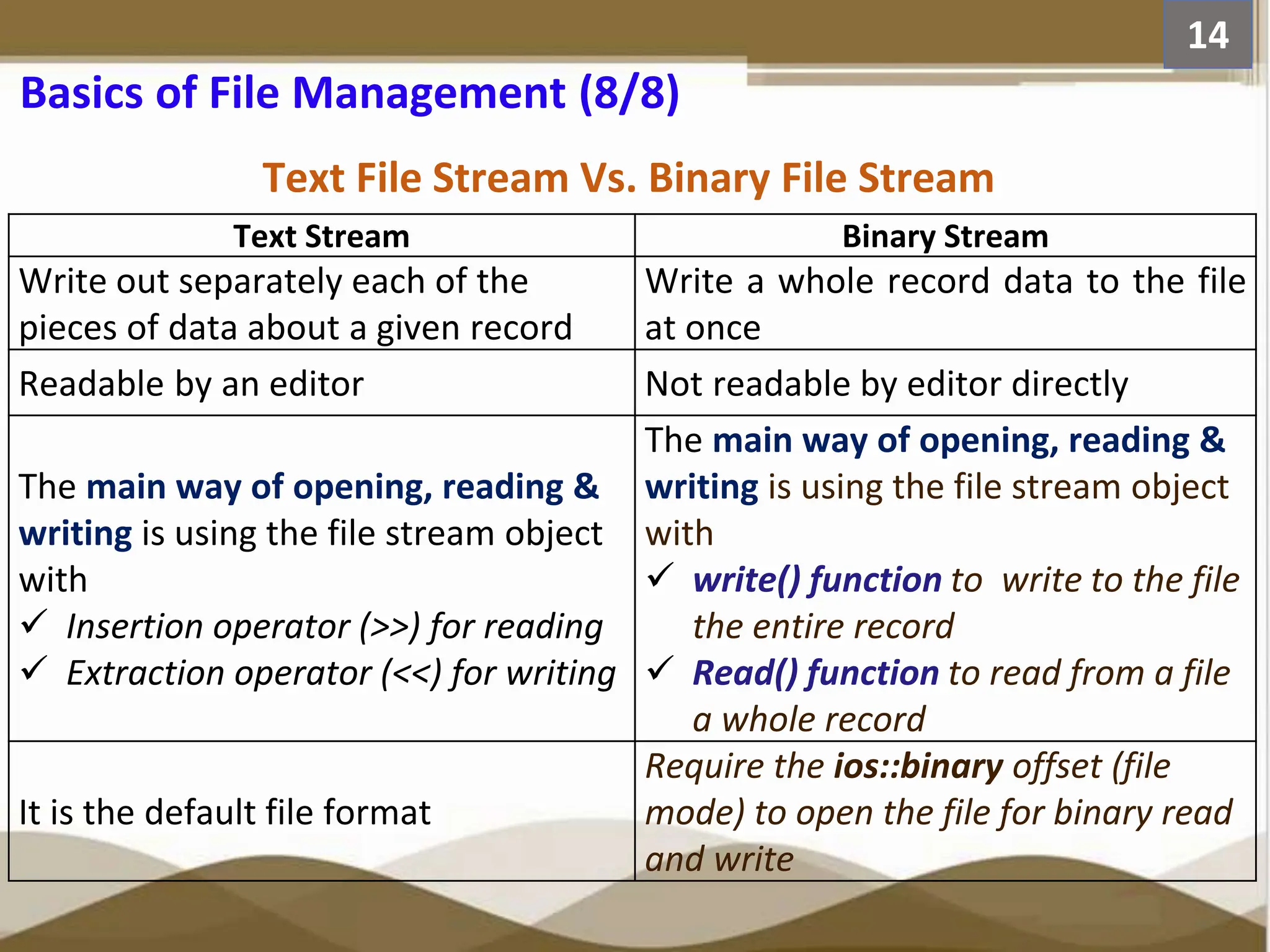
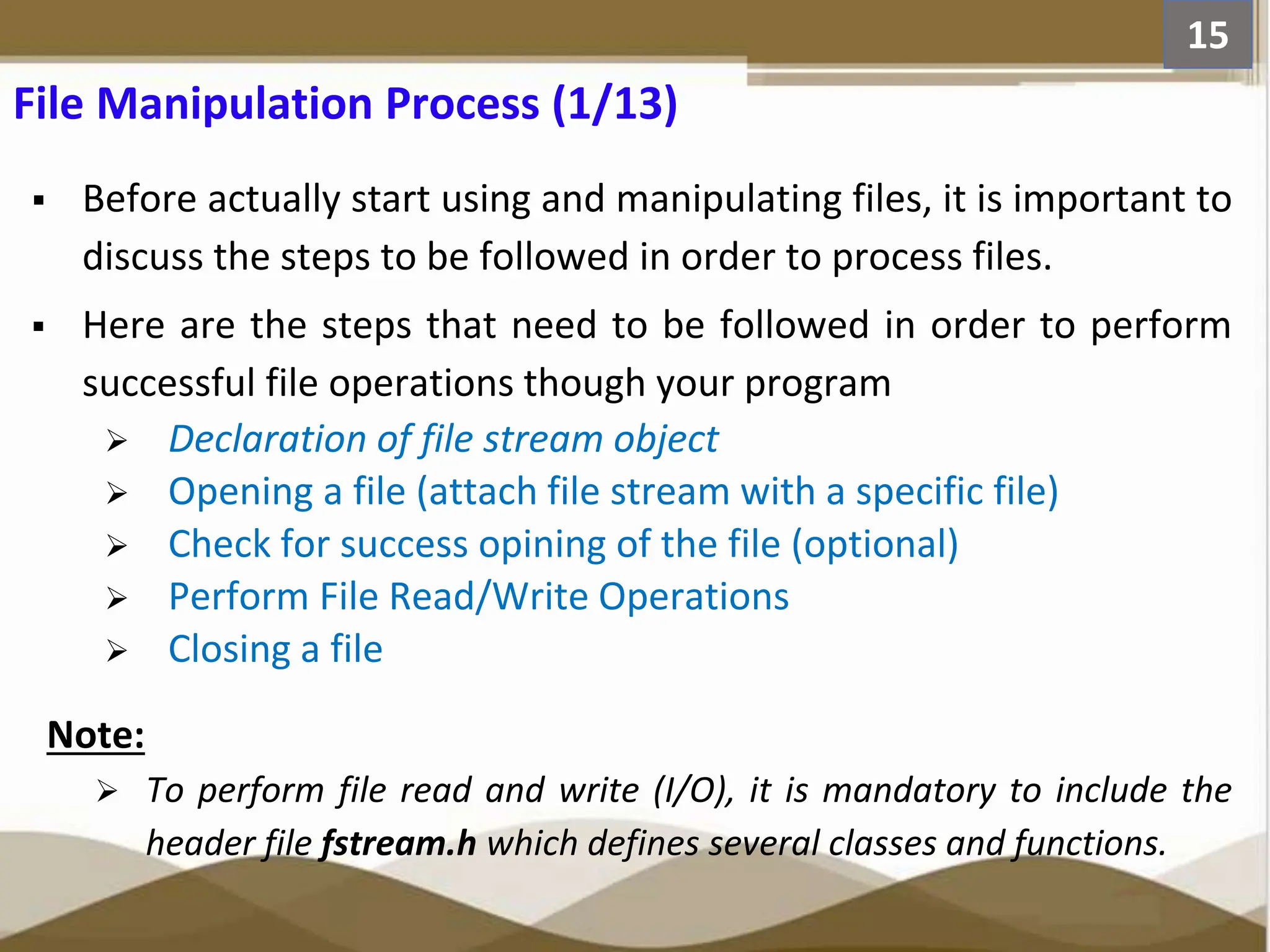


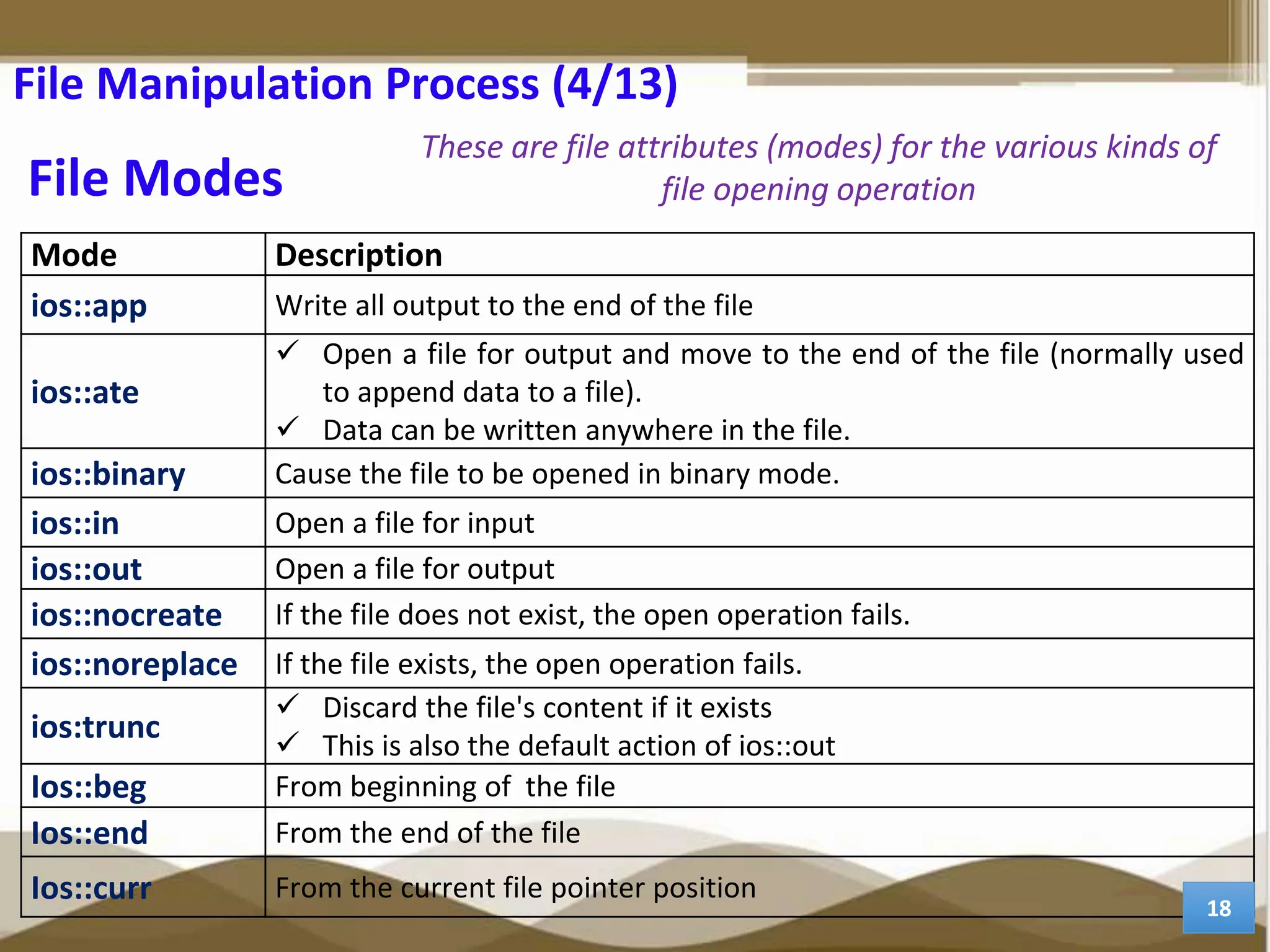
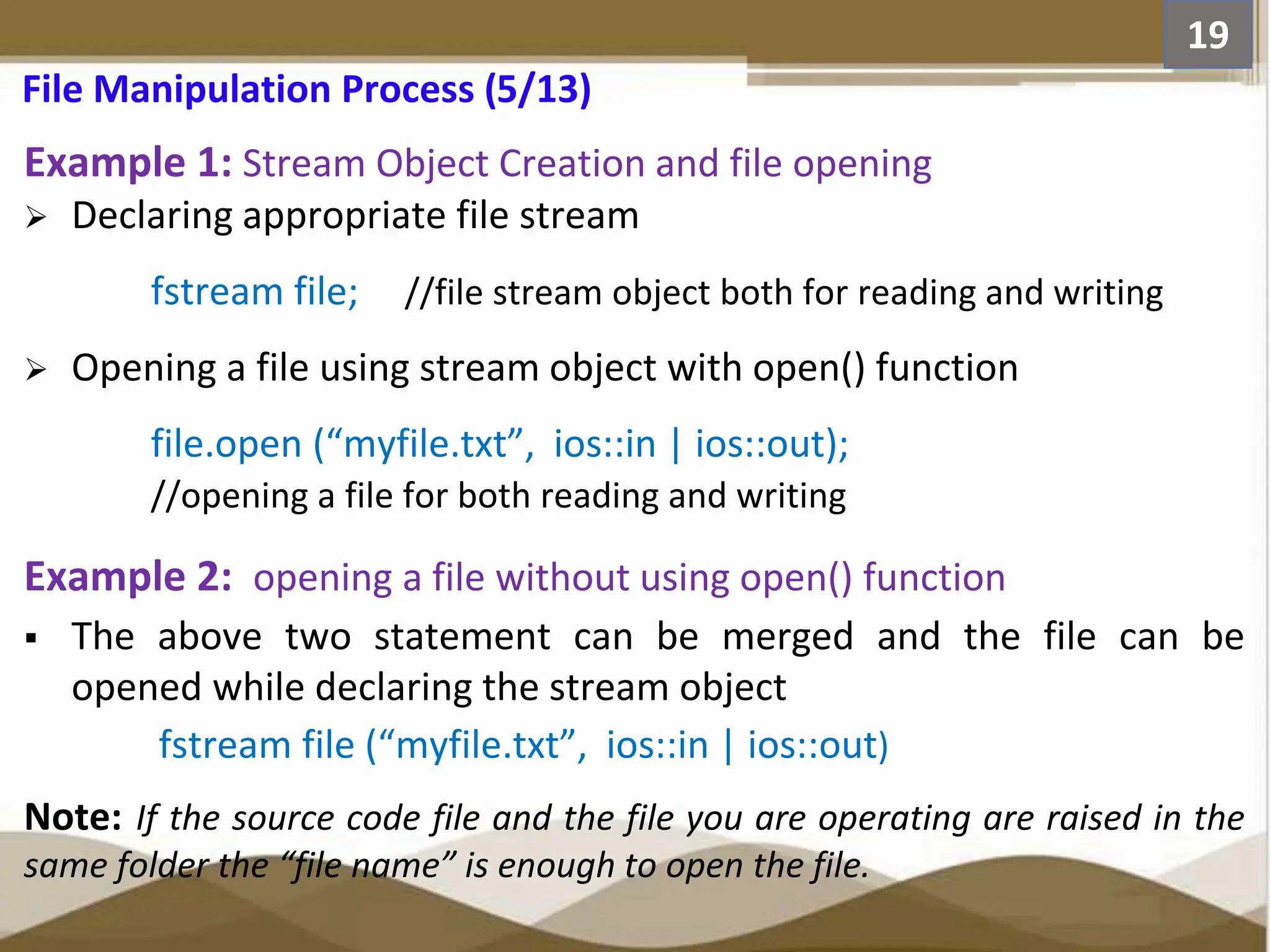

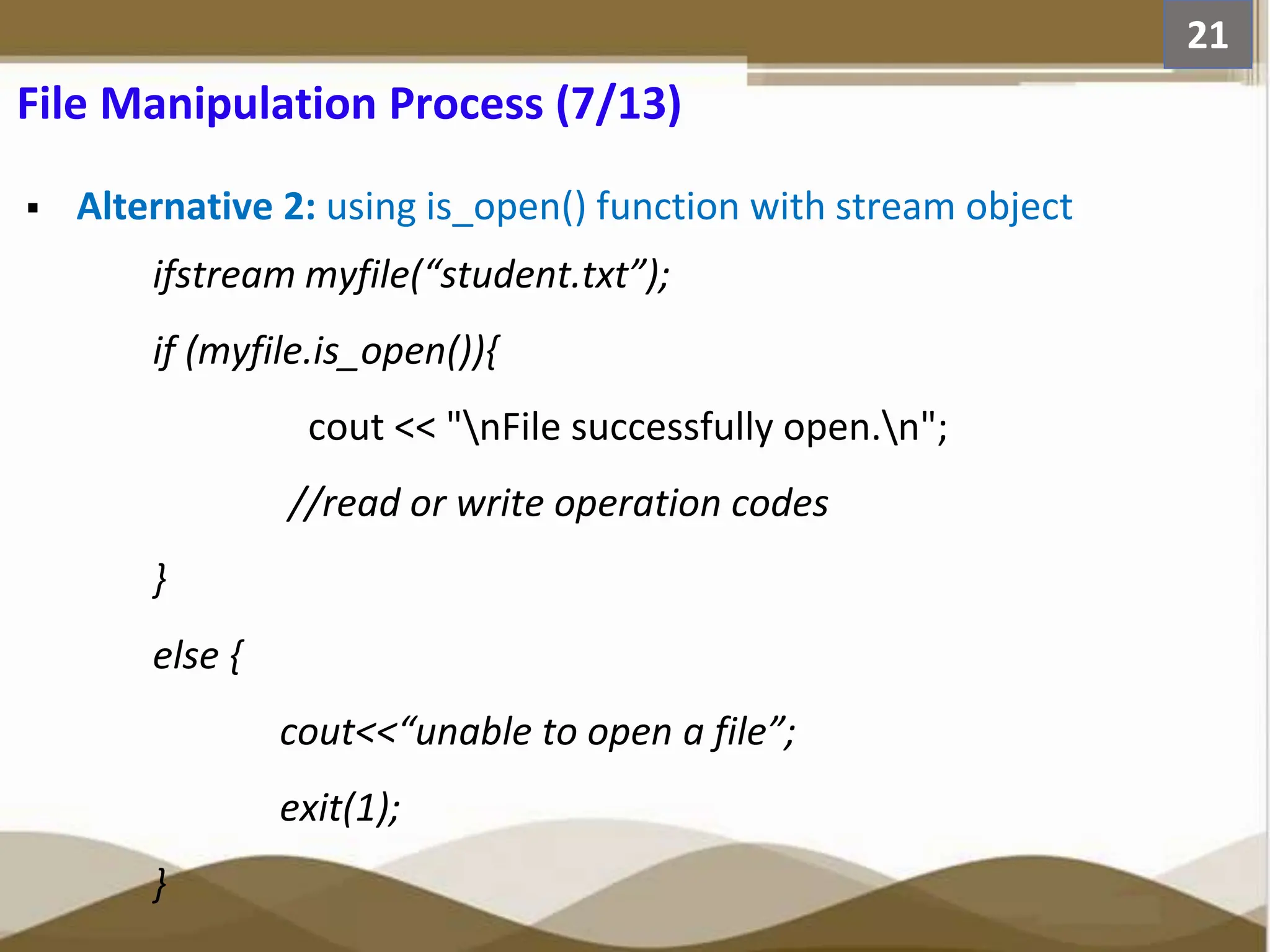
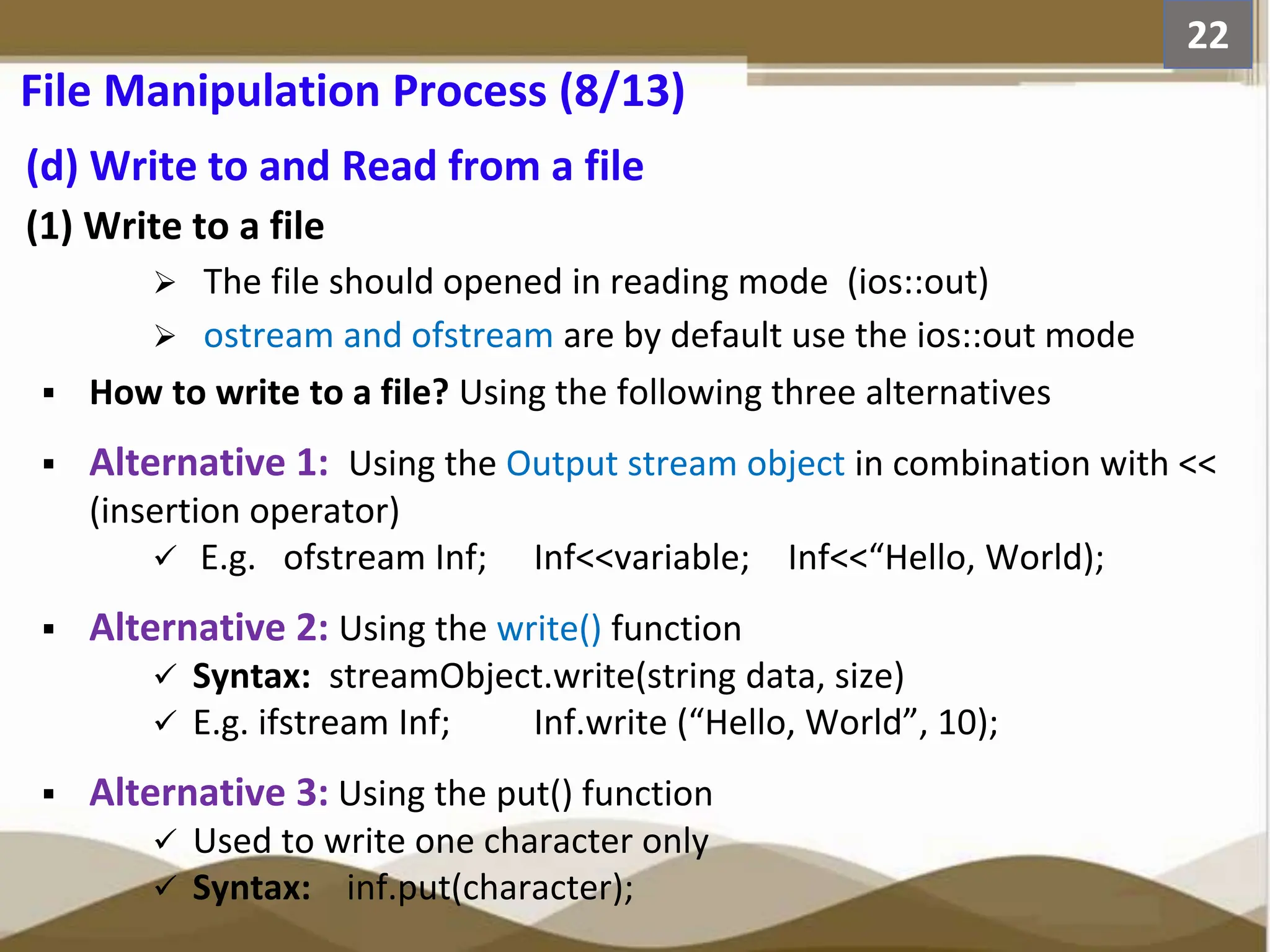
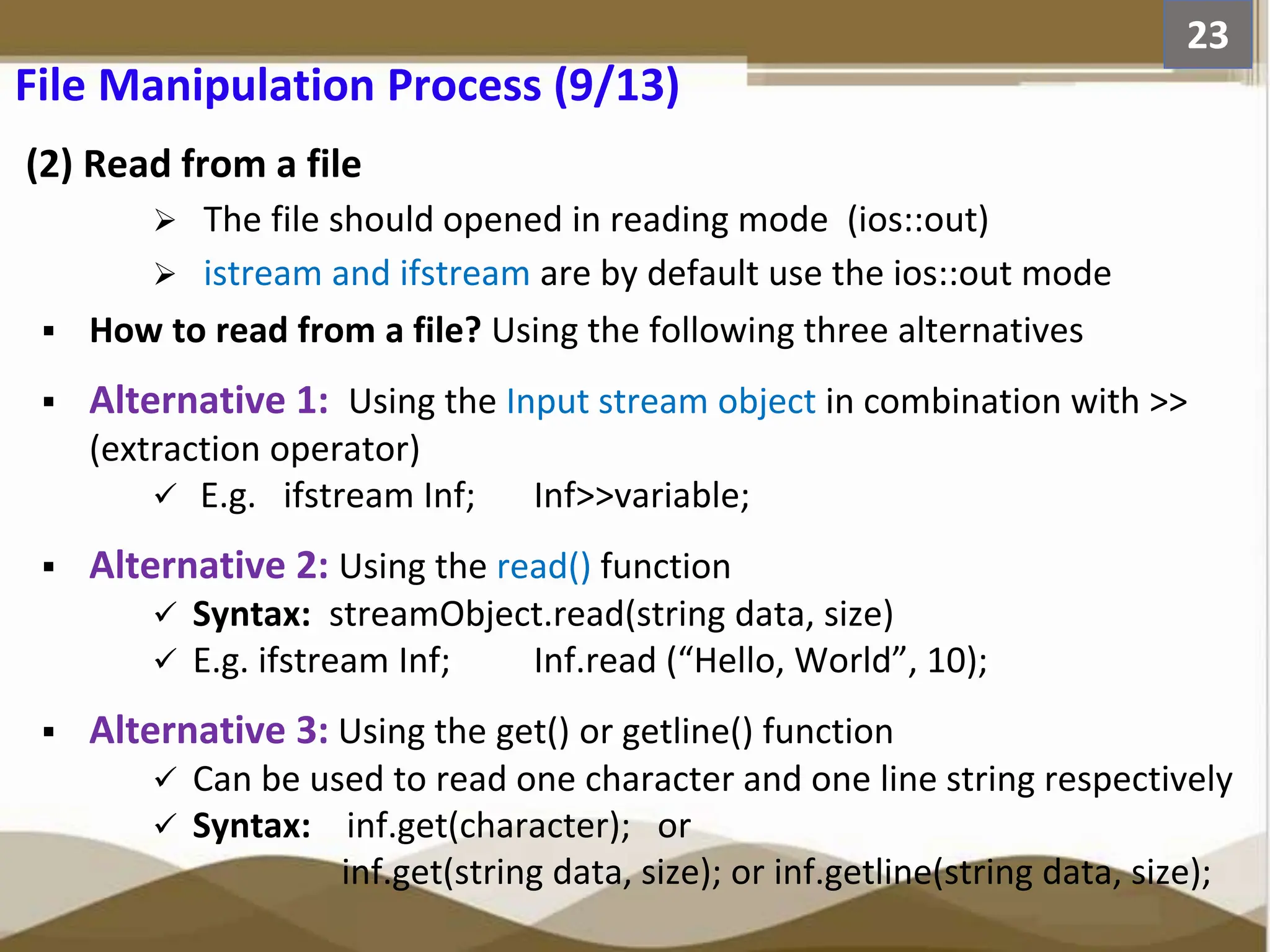

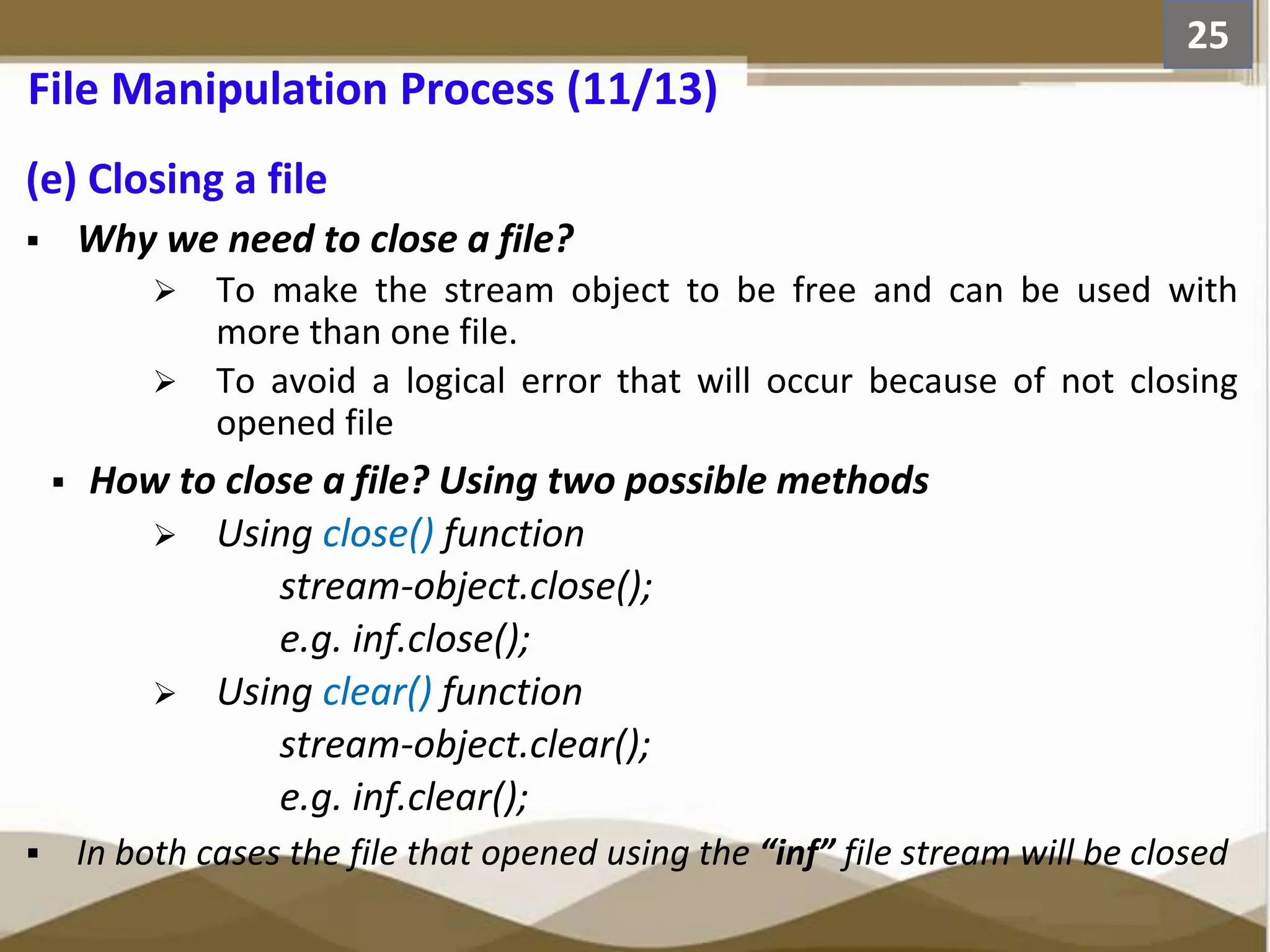
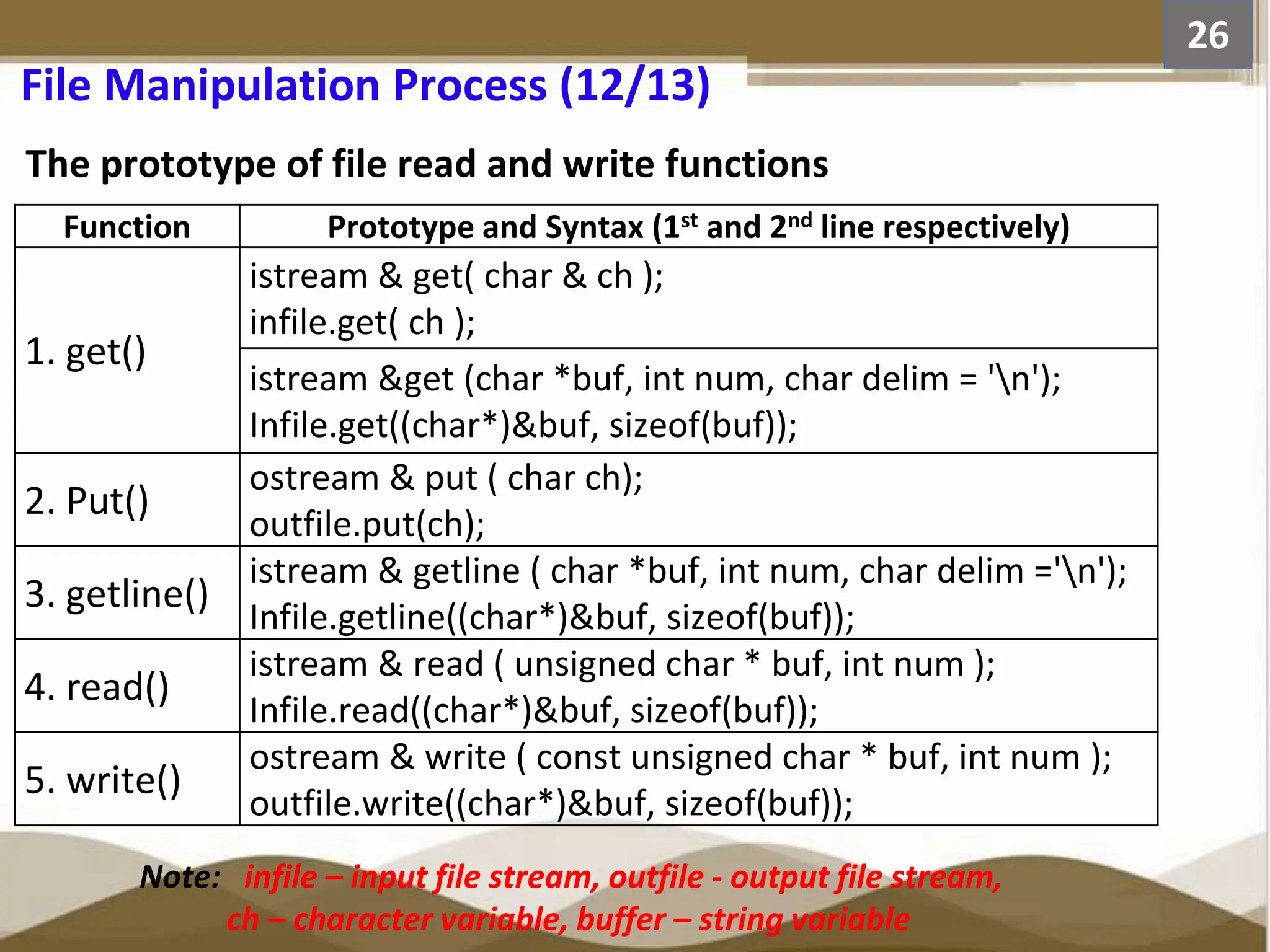
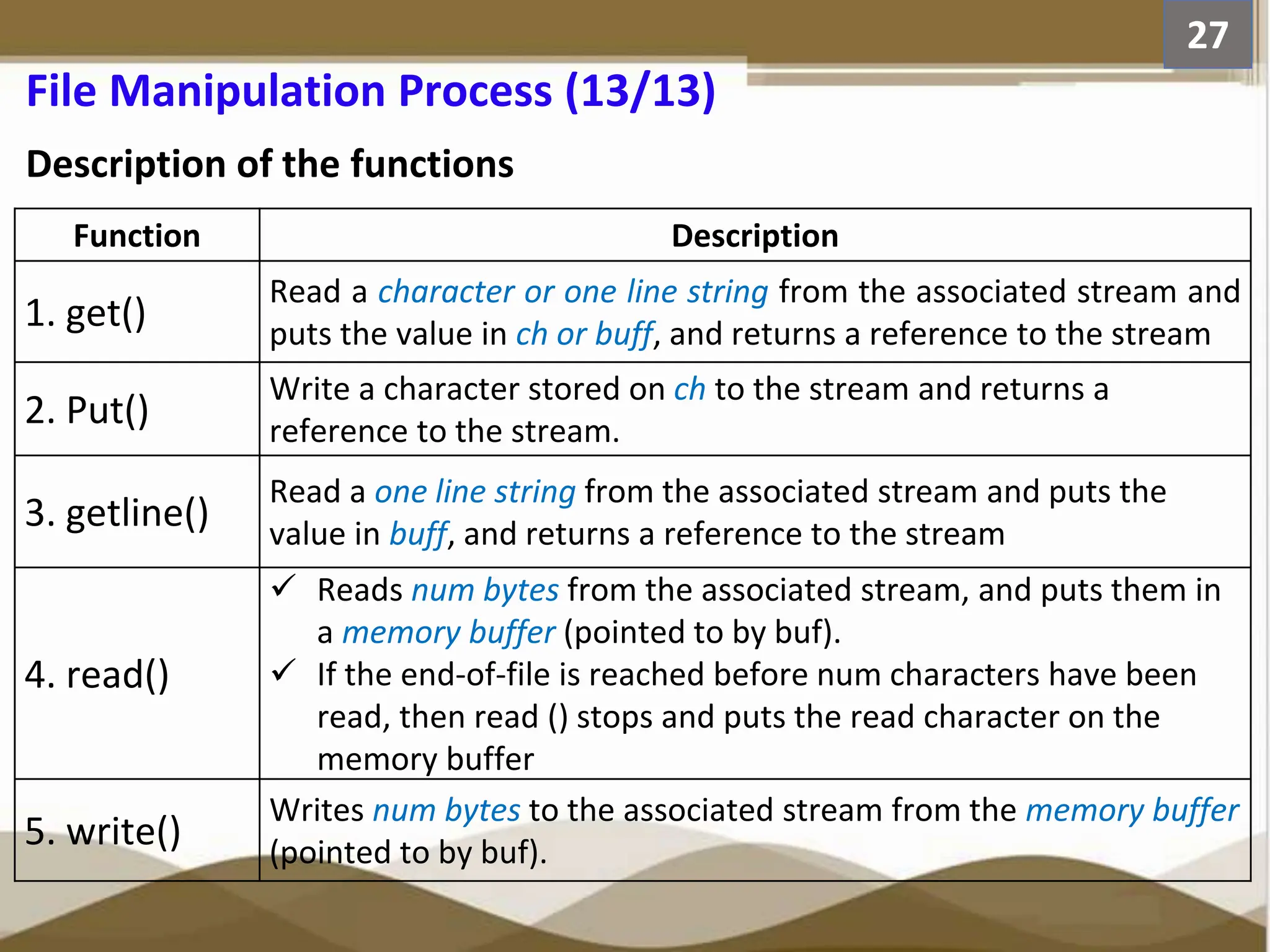
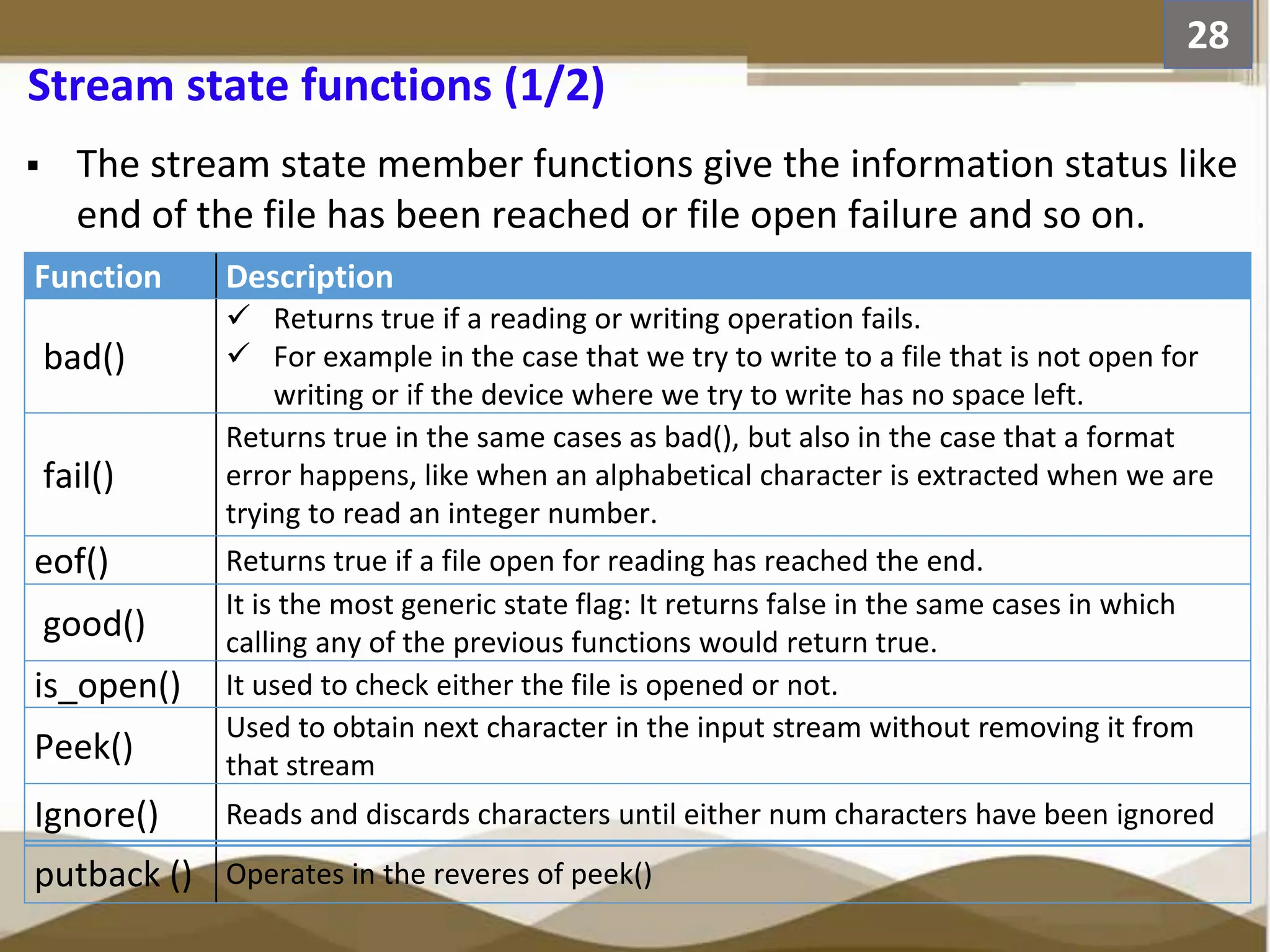
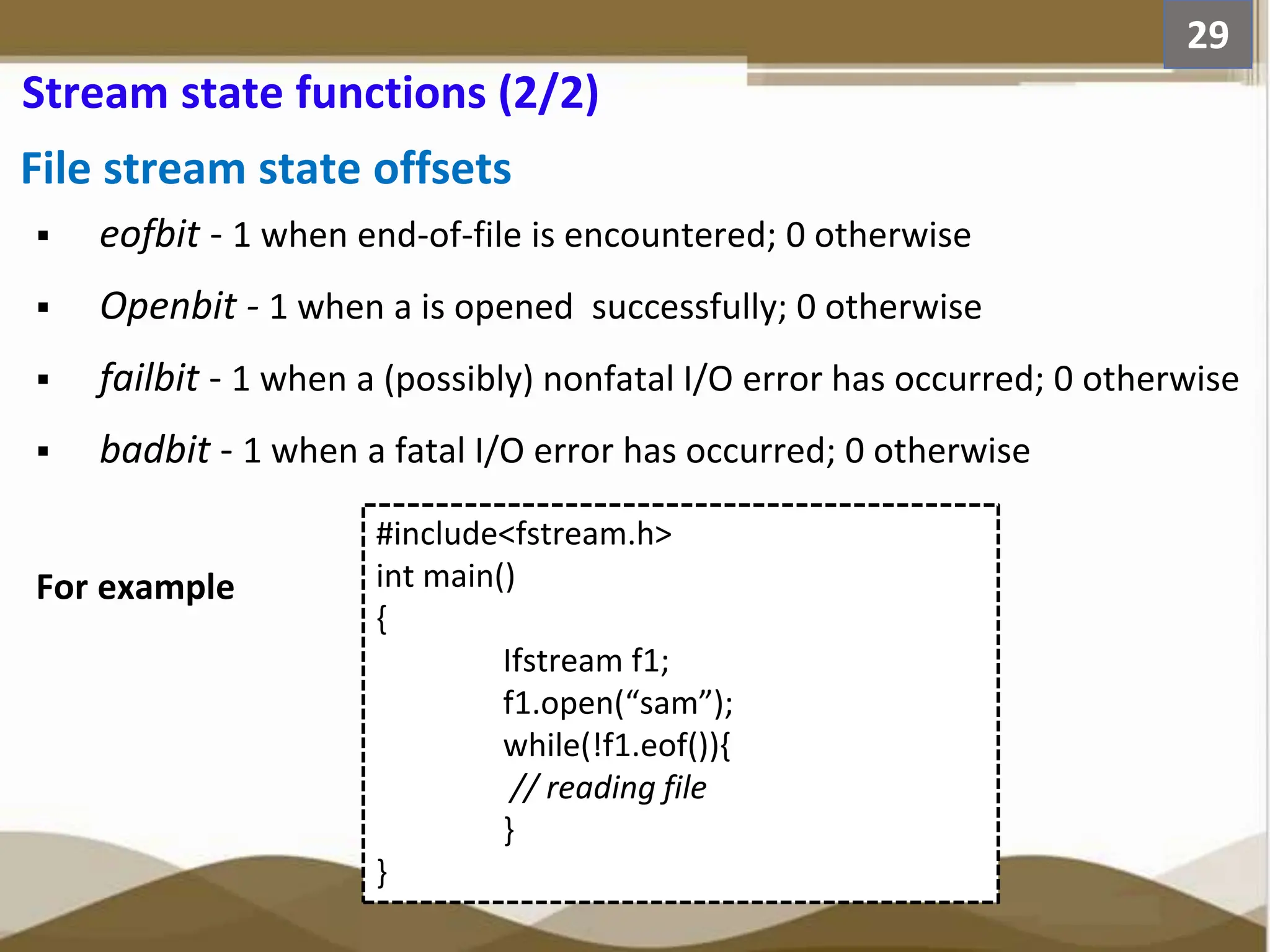


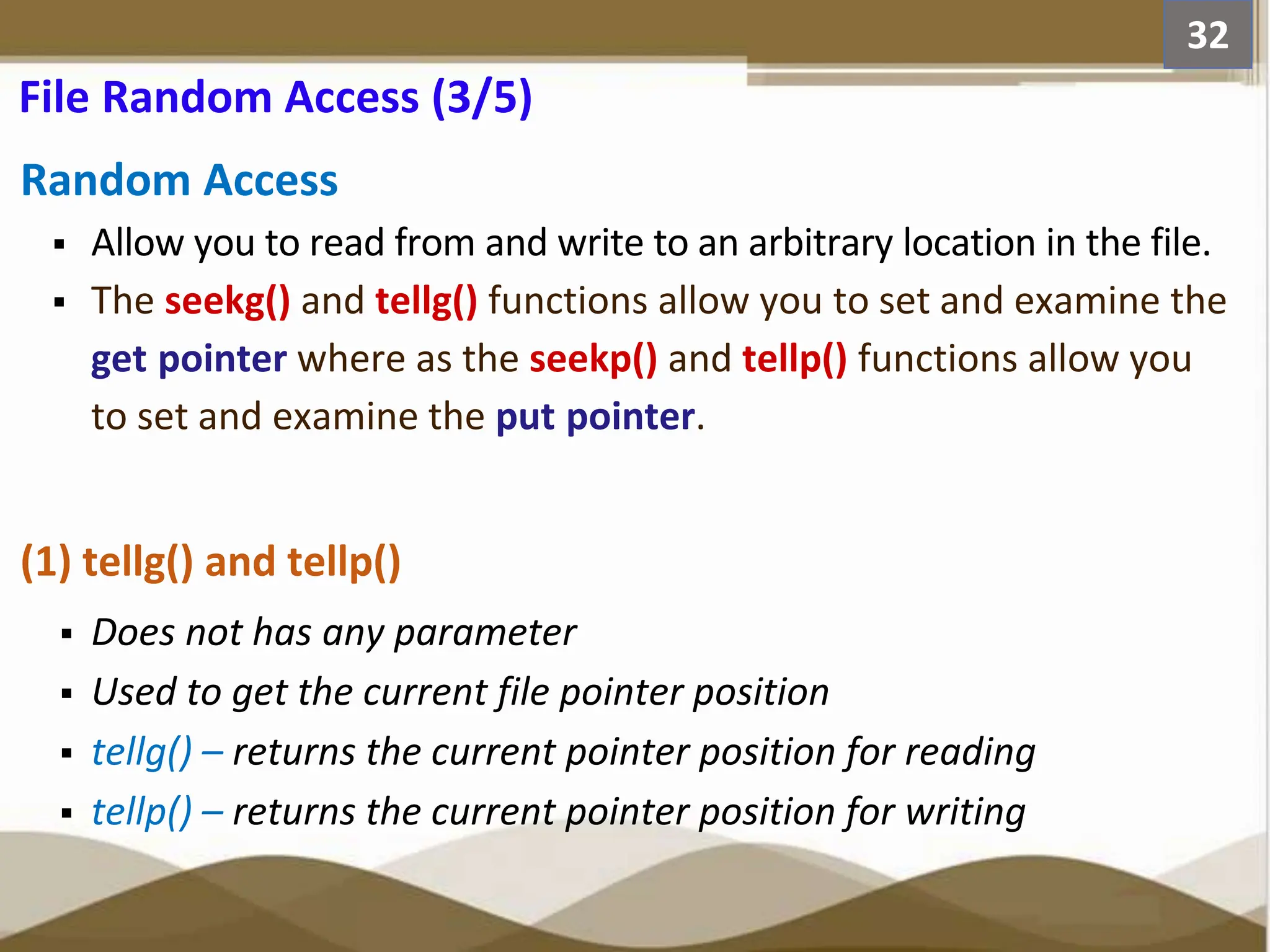
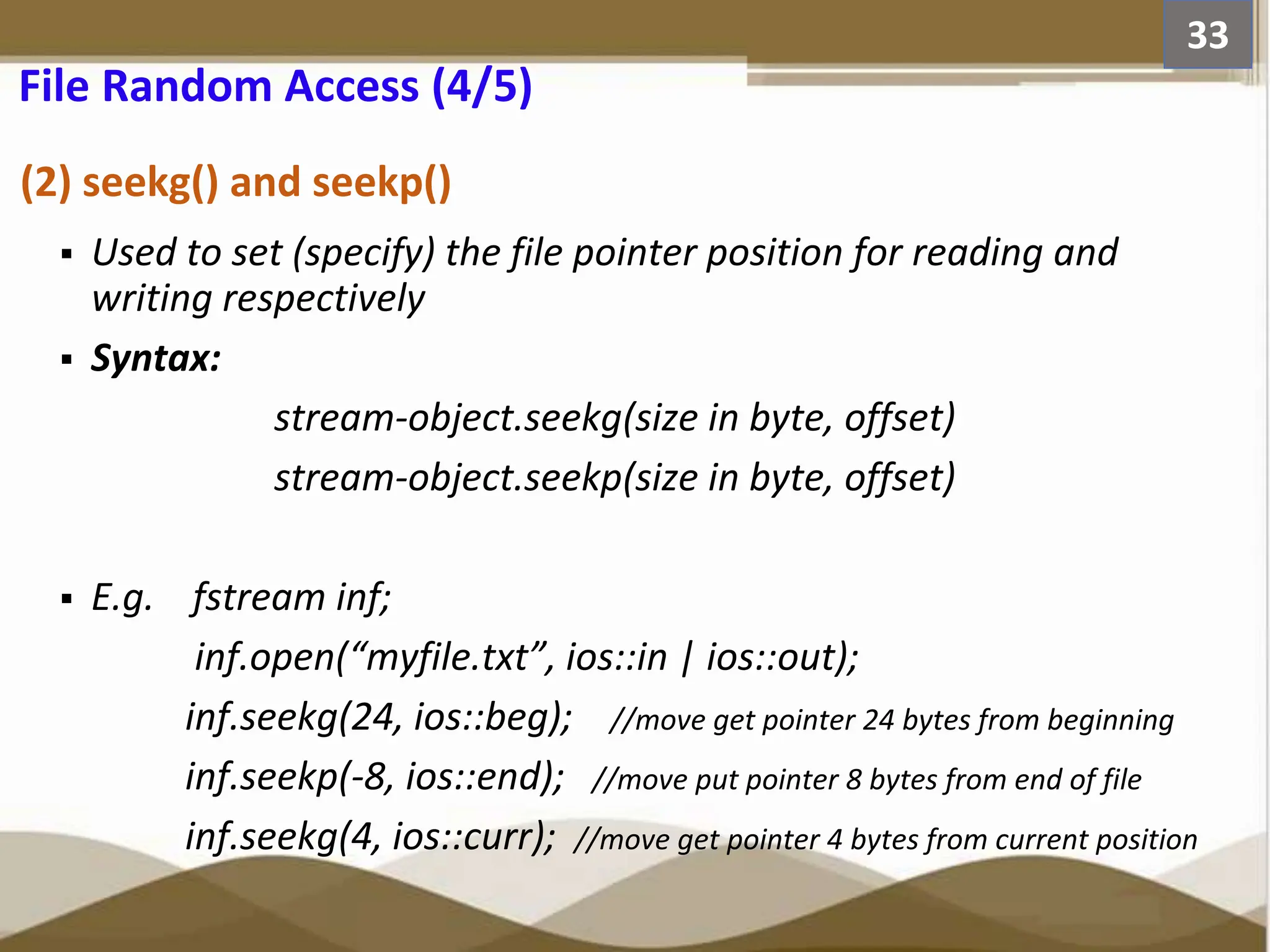
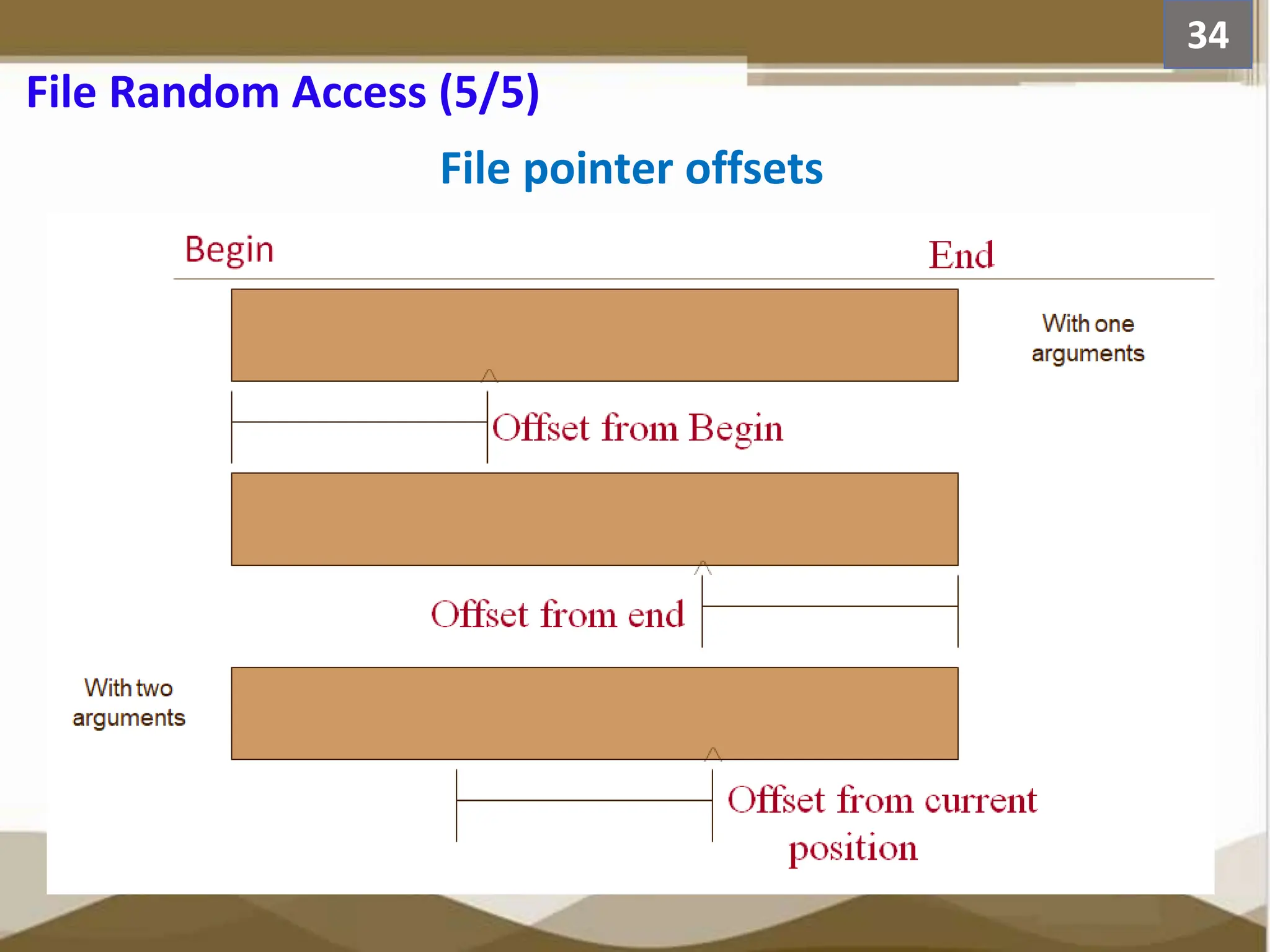
![Example 1a: write to a text file
// Create a sequential file.
#include <iostream>
#include <fstream>
using namespace std;
int main(){
ofstream outClientFile( "clients.txt", ios::out ); //creating ofstream object
//and opening a file
// check if unable to create file
if ( !outClientFile ) {
cout << "File could not be opened" << endl;
exit( 1 );
} // end if
int account;
char name[ 30 ], ch=‘y’;
double balance;
35
Practical Examples (1/12)](https://image.slidesharecdn.com/chapter8-filemanagement-240320042611-209d220e/75/File-Management-and-manipulation-in-C-Programming-35-2048.jpg)

![Example 1b: read from a text file
// Create a sequential file.
#include <iostream>
#include <fstream>
using namespace std;
int main(){
ifstream inClientFile( "clients.txt", ios::in); //creating ifstream object and
//opening a file
// check if unable to create file
if ( !inClientFile.is_open() ) {
cout << "File could not be opened" << endl;
exit( 1 );
} // end if
int account;
char name[ 30 ];
double balance;
37
Practical Examples (3/12)](https://image.slidesharecdn.com/chapter8-filemanagement-240320042611-209d220e/75/File-Management-and-manipulation-in-C-Programming-37-2048.jpg)
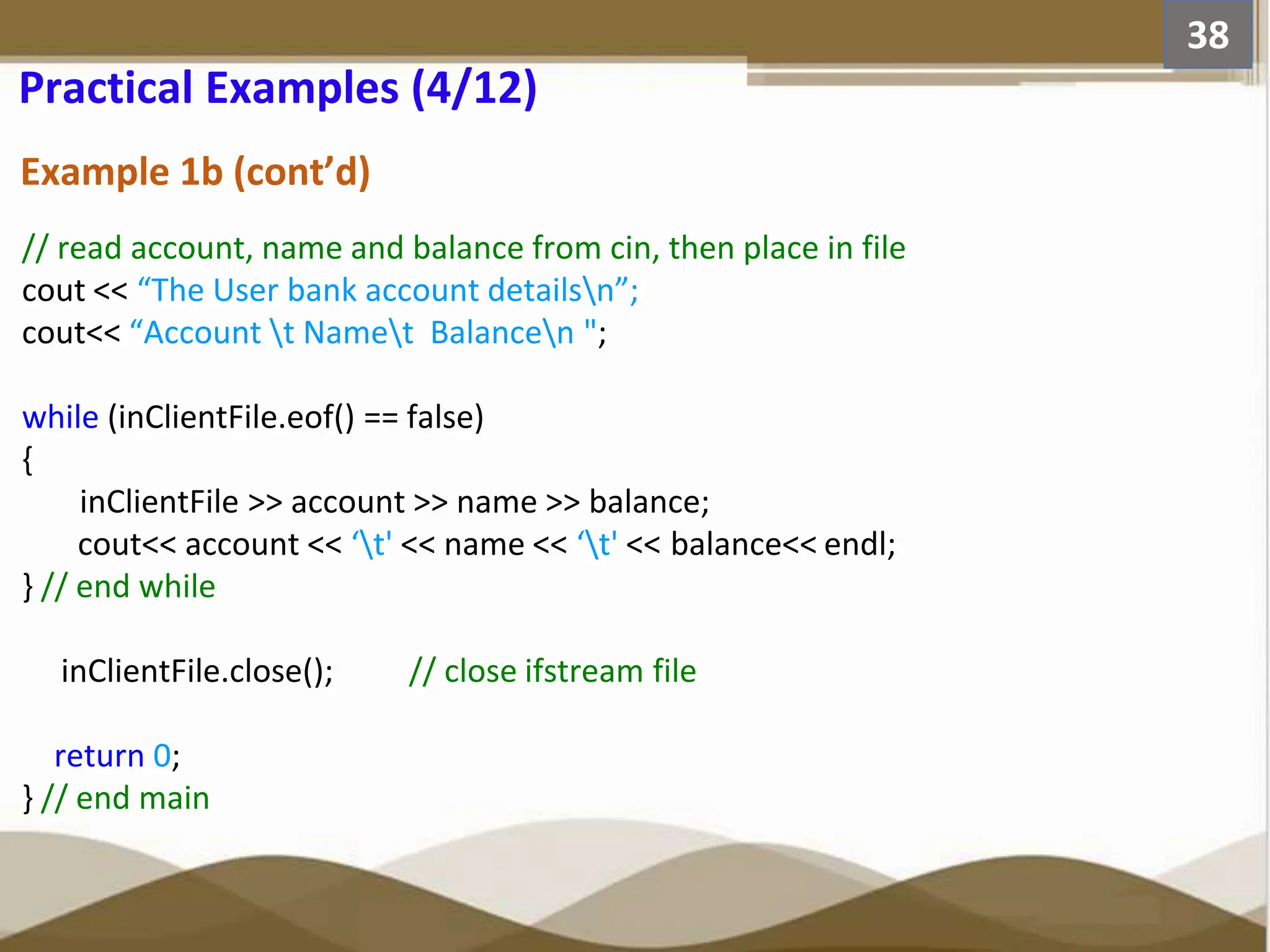
![Example 2: get() and put() functions
#include <iostream>
#include <fstream>
using namespace std;
int main(){
char str[80], c, d, ans;
ofstream outfl("try.txt");
// read a string from keyboard and write to a file.
do{
cout<<"please give the string : ";
gets(str); outfl<<str;
cout <<"do you want to write more...<y/n> : "; ans=getch();
}while(ans=='y');
outfl<<'0';
outfl.close();
39
Practical Examples (5/12)](https://image.slidesharecdn.com/chapter8-filemanagement-240320042611-209d220e/75/File-Management-and-manipulation-in-C-Programming-39-2048.jpg)
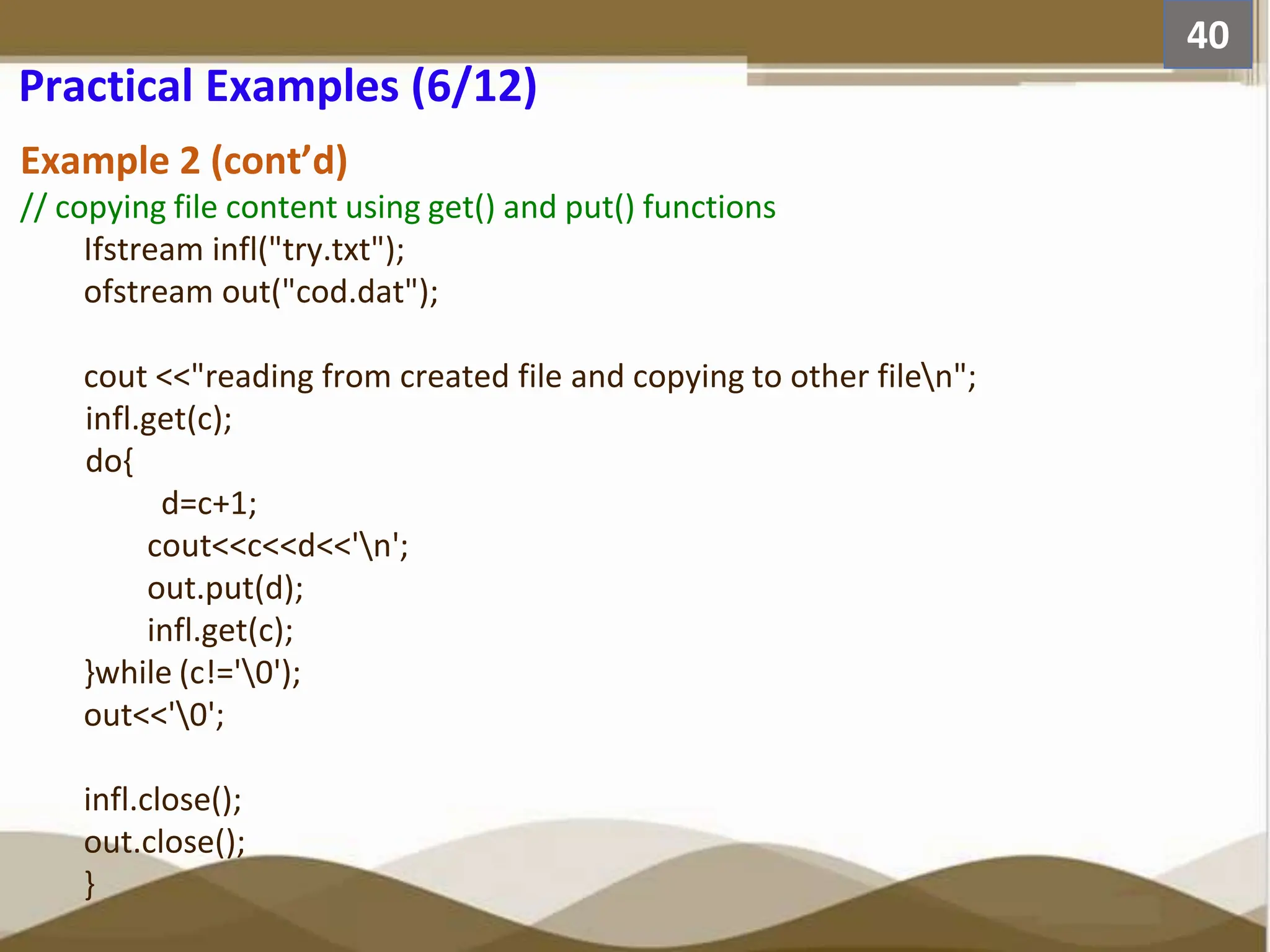
![Example 4a: write to binary file
41
Practical Examples (7/12)
#include <iostream>
#include <fstream>
using namespace std;
struct Student{
int roll;
char name[25];
float marks;
} stud;
void getdata(){
cout<<"nnEnter Roll : ";
cin>>stud.roll;
cout<<"nEnter Name : ";
cin>>stud.name;
cout<<"nEnter Marks : ";
cin>>stud.marks;
}
void AddRecord(){
fstream outf;
outf.open("Student.dat",ios::app|ios::binary);
getdata();
outf.write( (char *) &stud, sizeof(stud) );
outf.close();
}
int main()
{
char ch='n';
do{
AddRecord();
cout<<"nwant to add more (y/n) : ";
get(ch);
} while(ch=='y' || ch=='Y');
cout<<"nData written successfully...";
}](https://image.slidesharecdn.com/chapter8-filemanagement-240320042611-209d220e/75/File-Management-and-manipulation-in-C-Programming-41-2048.jpg)
![Example 4b: read from binary file
42
Practical Examples (8/12)
#include <iostream>
#include <fstream>
using namespace std;
struct Student{
int roll;
char name[25];
float marks;
} stud;
void putData()
{
cout<<"n”<<stud.Roll;
cout<<“t”<<stud.Name;
cout<<“t”<<stud.Marks;
}
void Display(){
fstream inf;
inf.open("Student.dat",ios::in|ios::binary);
cout<<"ntRolltNametMarksn";
inf.read( (char *) &Stu, sizeof(stud) );
while(inf != NULL){
putData();
inf.read( (char *) &Stu, sizeof(stud) );
}
inf.close();
}
int main() {
Display ();
}](https://image.slidesharecdn.com/chapter8-filemanagement-240320042611-209d220e/75/File-Management-and-manipulation-in-C-Programming-42-2048.jpg)
![Example 5: random access
43
Practical Examples (9/12)
/* C++ File Pointers and Random Access
* This program demonstrates the concept
* of file pointers and random access */
#include <iostream>
#include <fstream>
using namespace std;
#include <string.h>
struct Student{
int roll;
char name[25];
float marks;
char grade;
} stud1, stud;
void getData(){
cout<<“Student Inof:n”;
cout<<"Rollno: "; cin>>stud1.rollno;
cout<<"Name: "; cin>>stud1.name;
cout<<"Marks: "; cin>>stud1.marks;
float marks = stud1.marks;
if(marks>=75) {stud1.grade = 'A'; }
else if(marks>=60){stud1.grade = 'B'; }
else if(marks>=50){stud1.grade = 'C'; }
else if(marks>=40){stud1.grade = 'D'; }
else{ stud1.grade = 'F'; }
}
int getrno(){
return stud1.rollno;
}](https://image.slidesharecdn.com/chapter8-filemanagement-240320042611-209d220e/75/File-Management-and-manipulation-in-C-Programming-43-2048.jpg)
![Example 5 (cont’d)
44
Practical Examples (10/12)
void putdata(){
cout<<"Rollno: "<<rollno;
cout<<"tName: "<<name<<"n";
cout<<"Marks: "<<marks;
cout<<"tGrade: "<<grade<<"n";
}
void modify(){
cout<<"Rollno: "<<rollno<<"n";
cout<<"Name: "<<name;
cout<<"tMarks: "<<marks<<"n";
cout<<"Enter new details.n";
char nam[20]=" ";
float mks;
cout<<"New name:(Enter '.' to retain z old): ";
cin>>nam;
cout<<"New marks:(Press -1 to retain z old):";
cin>>mks;
if(strcmp(nam, ".")!=0){
strcpy(name, nam);
}
if(mks != -1){
stud1.marks = mks;
if(stud1.marks>=75){stud1.grade = 'A';}
else if(stud1.marks>=60){stud1.grade = 'B';}
else if(marks>=50){stud1.grade = 'C';}
else if(stud1.marks>=40){stud1.grade = 'D';}
else{ grade = 'F'; }
}
}](https://image.slidesharecdn.com/chapter8-filemanagement-240320042611-209d220e/75/File-Management-and-manipulation-in-C-Programming-44-2048.jpg)
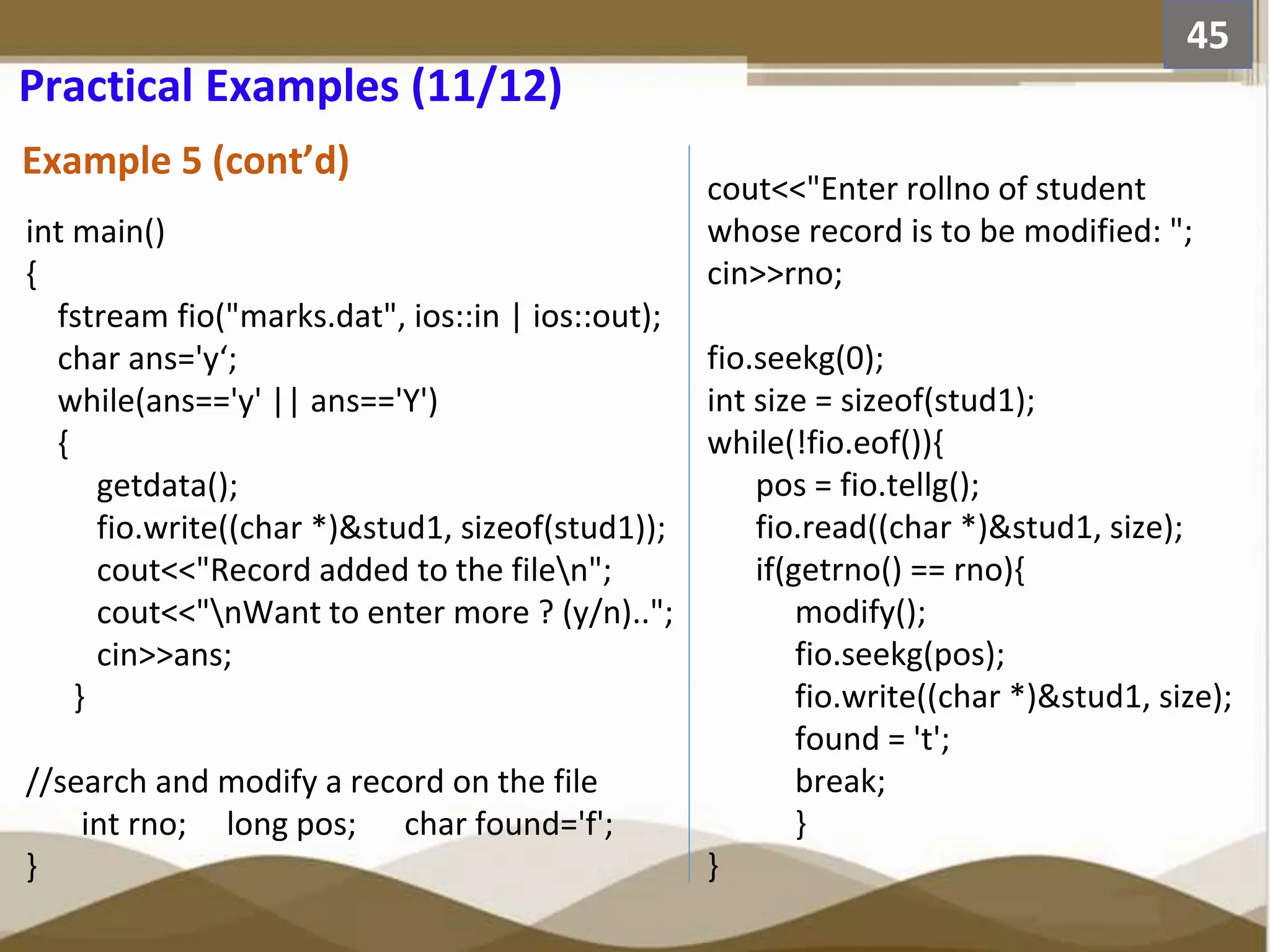
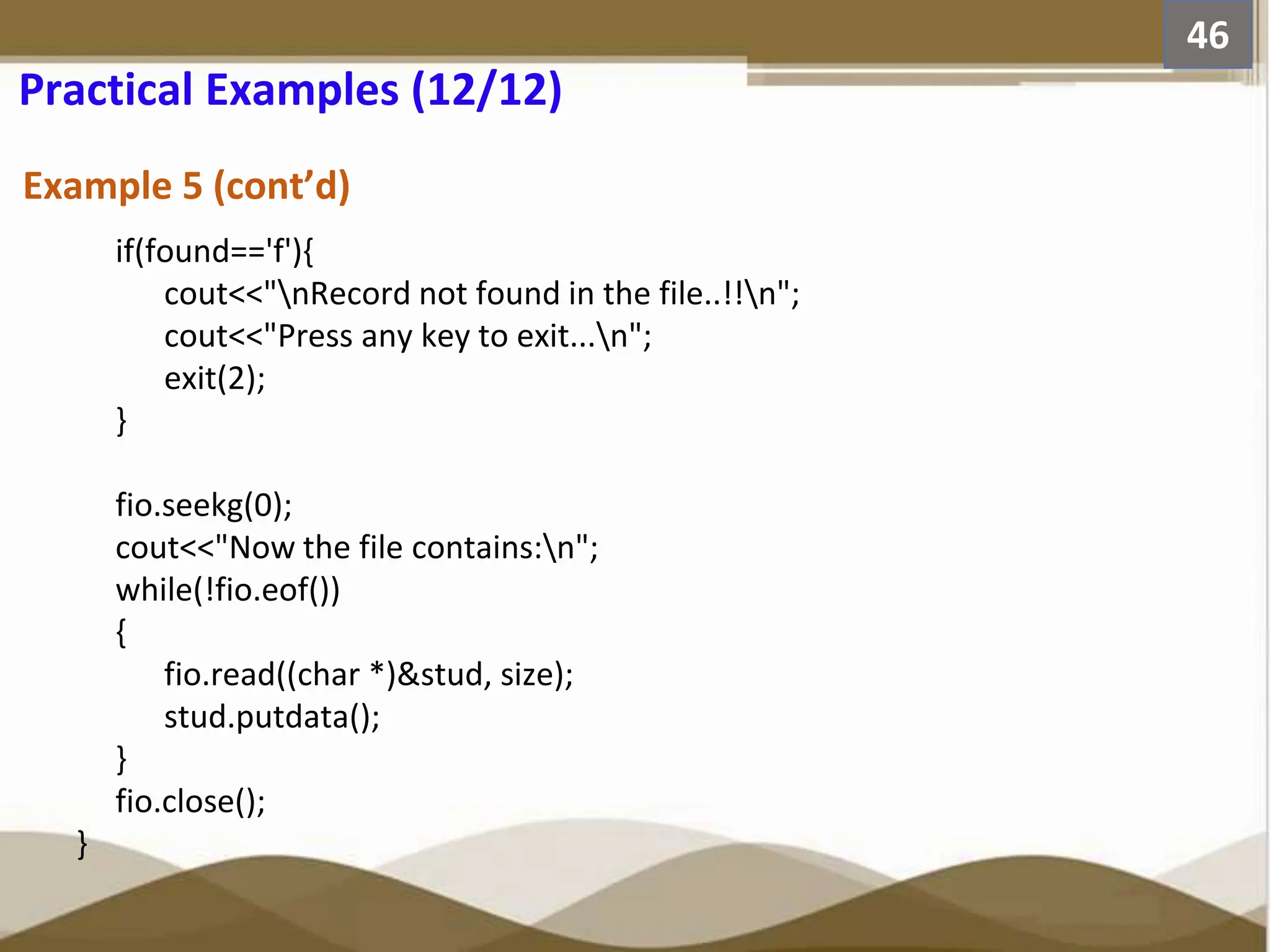

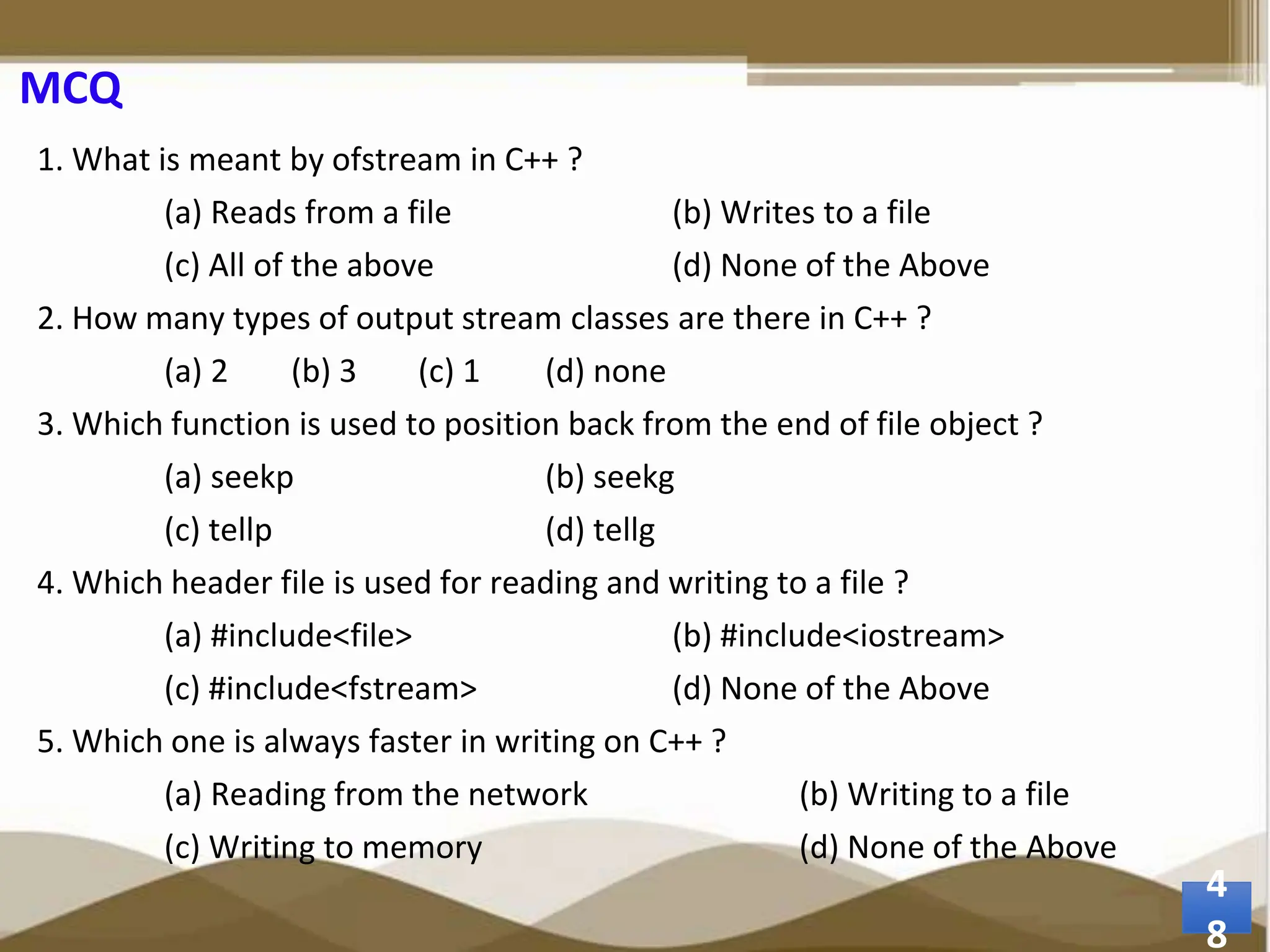
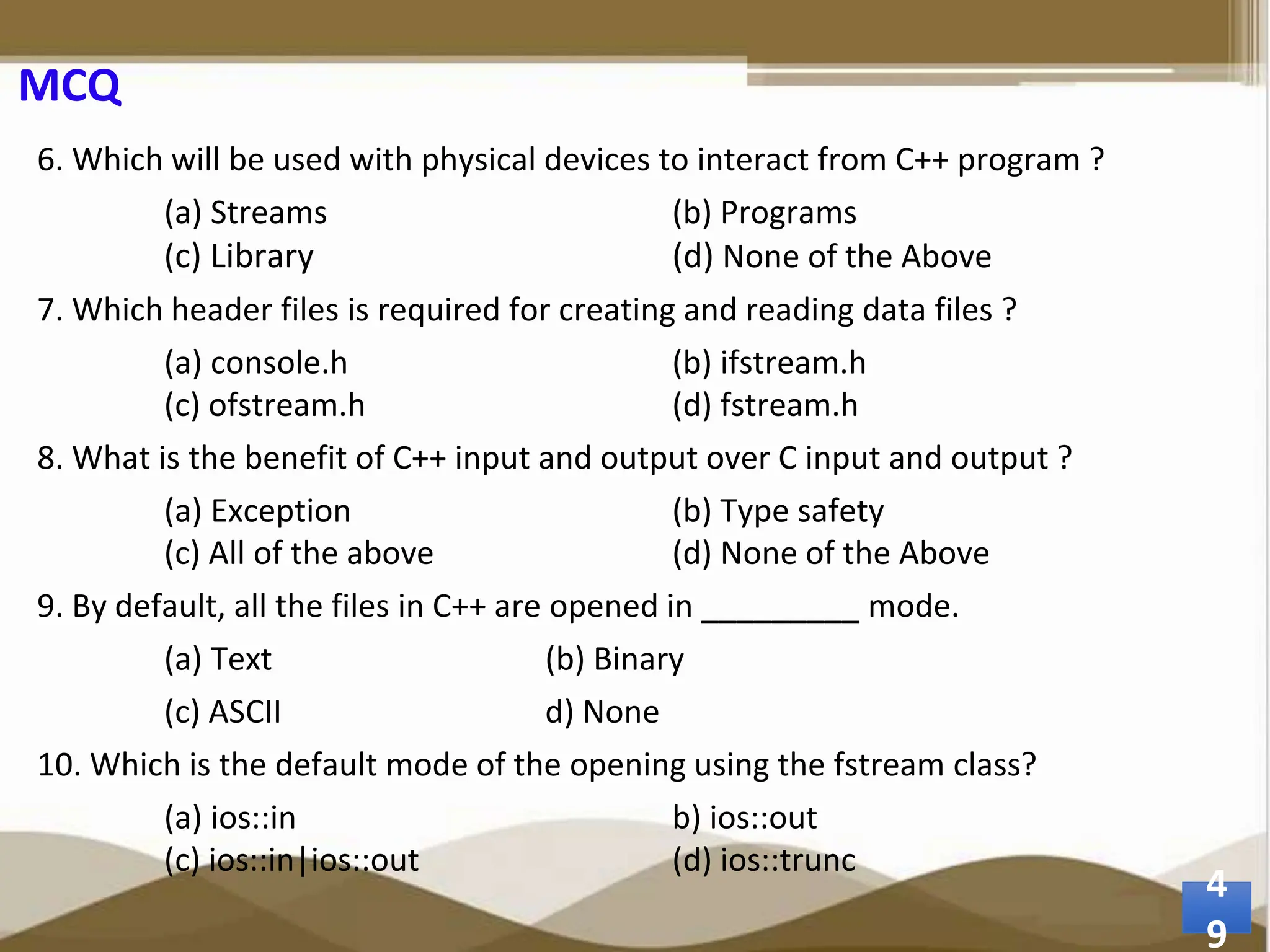
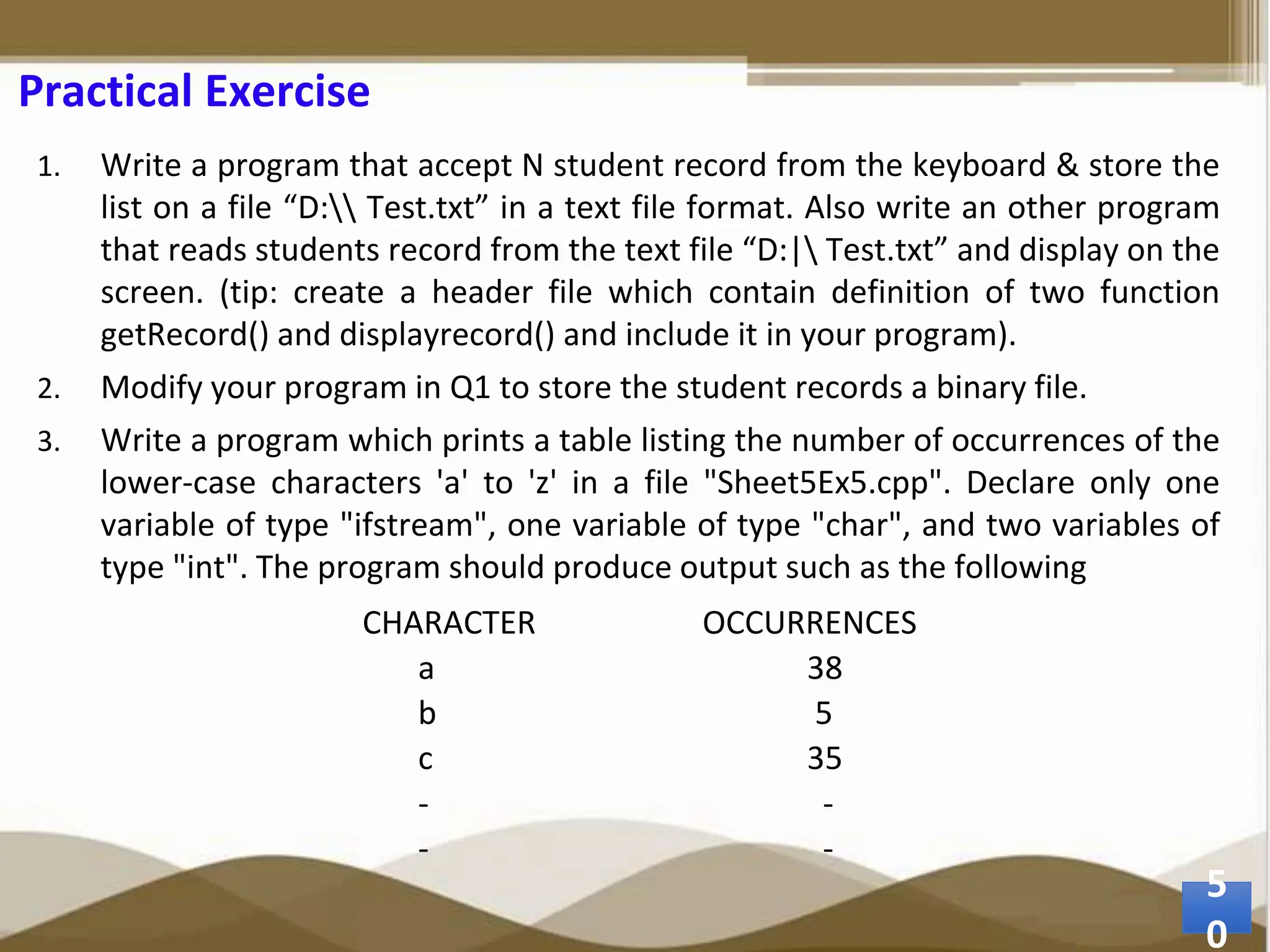
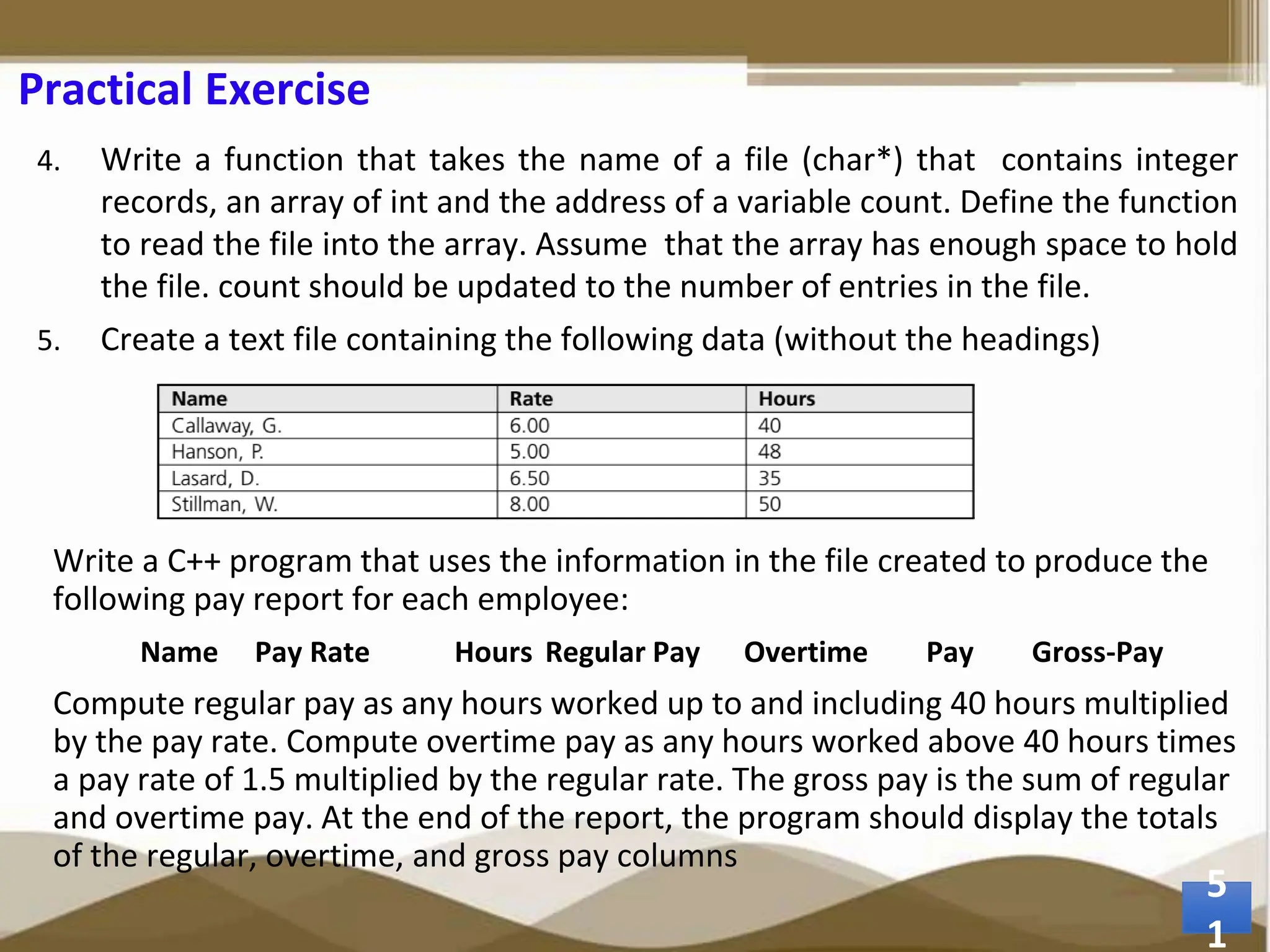

![Reading Resources/Materials
Chapter 14:
✔ P. Deitel , H. Deitel; C++ how to program [10th edition], Global Edition
(2017)
Chapter 14:
✔ Diane Zak; An Introduction to Programming with C++ (8th Edition), 2016
Cengage Learning
Chapter 6:
✔ Walter Savitch; Problem Solving With C++ [10th edition, University of
California, San Diego, 2018
Chapter 18:
✔ Herbert Schildt; C++ From the Ground Up (3rd Edition), 2003 McGraw-
Hill, California 94710 U.S.A.
5
3](https://image.slidesharecdn.com/chapter8-filemanagement-240320042611-209d220e/75/File-Management-and-manipulation-in-C-Programming-53-2048.jpg)
